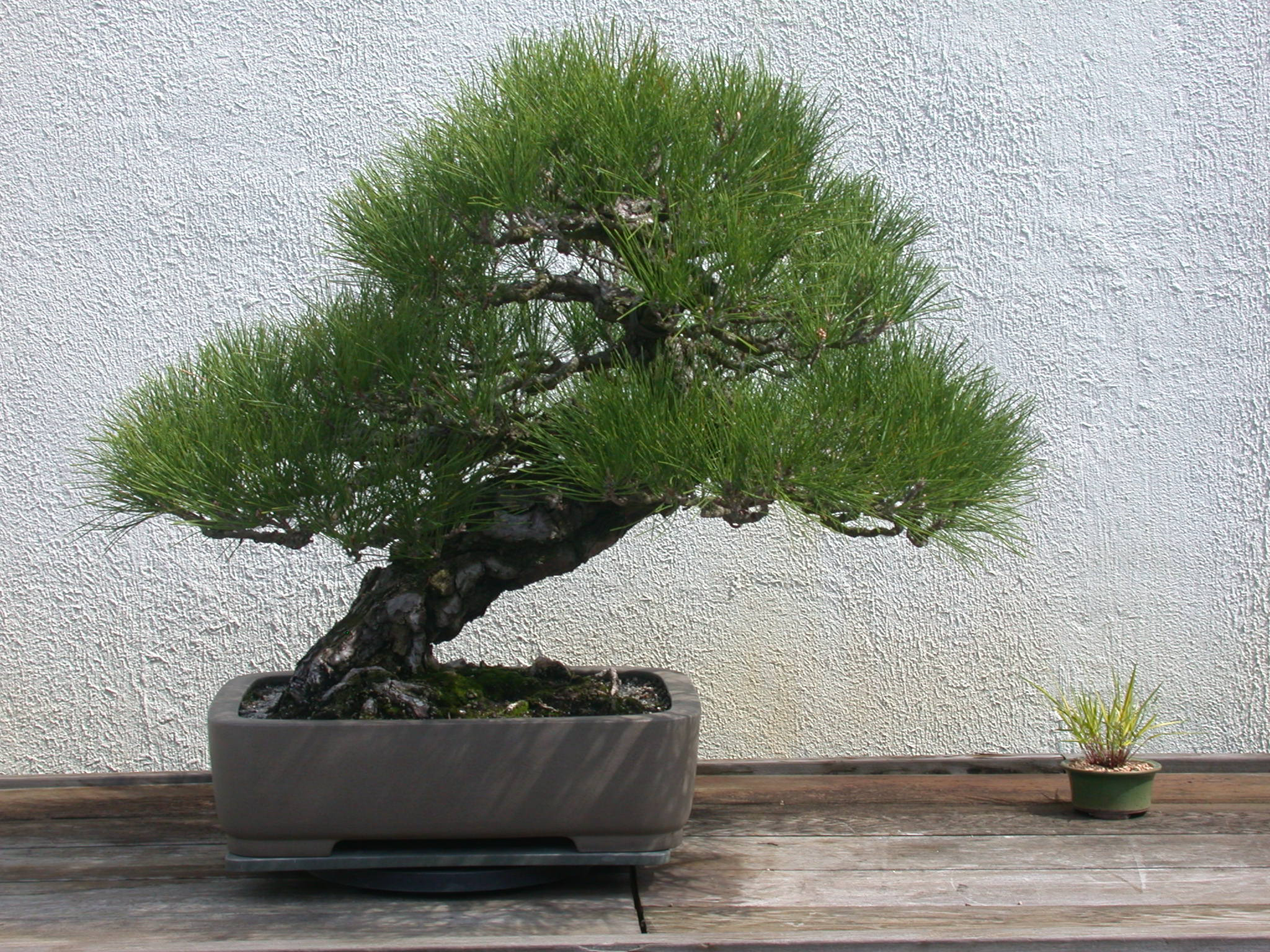
Japanese Black Pine
Pinus thunbergii
In training since 1895
Gift of Saichi Suzuki, 1976
The Japanese bonsai gift to the United States in honor of our bicentennial included 50 trees to represent the states, one of which had to be the same age as the country. This bonsai was chosen as the first tree because it was believed to be about 200 years old at the time of the dedication in 1976. It was originally collected from the Atsumi peninsula, southwest of Tokyo.
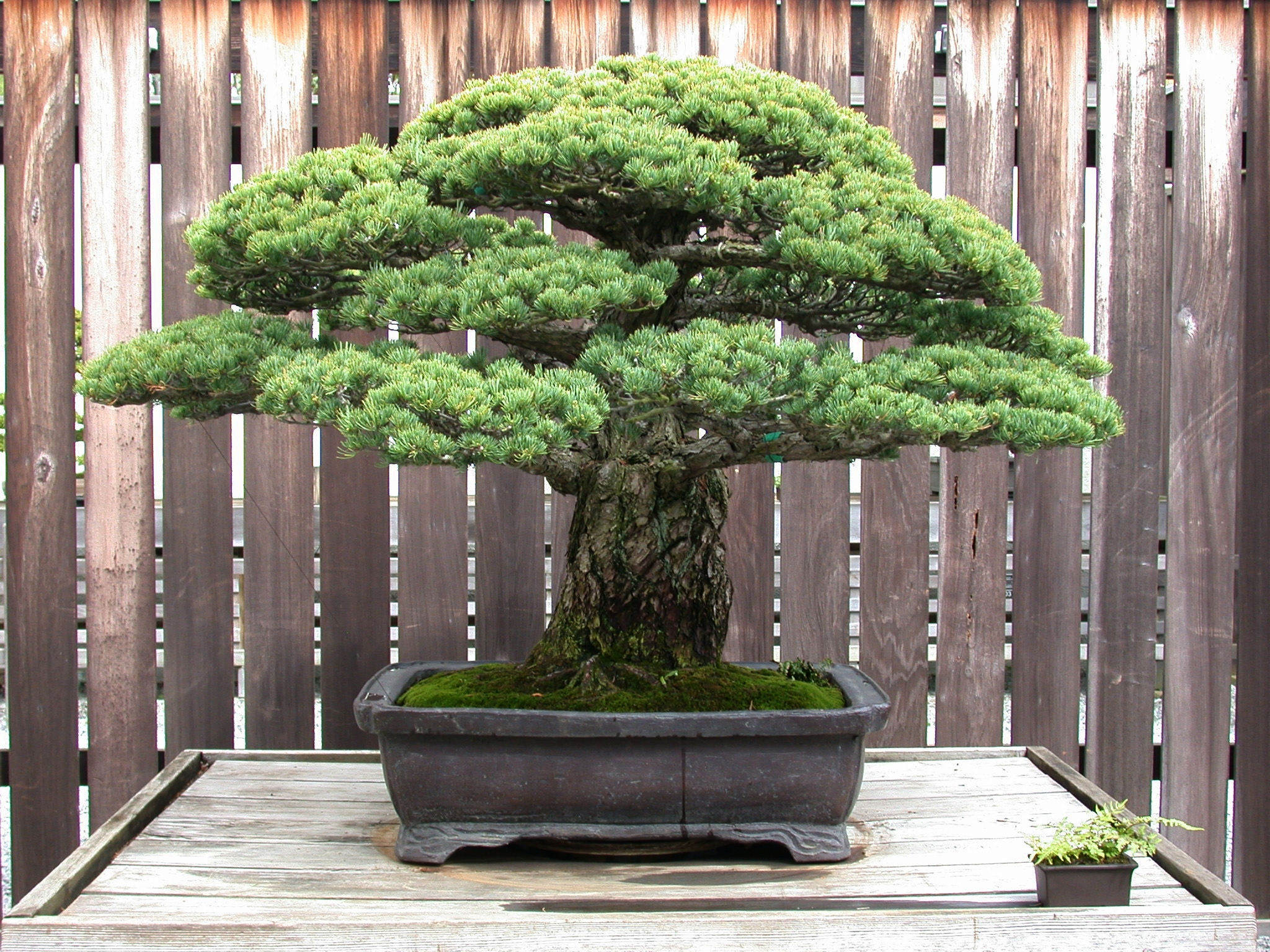
Japanese white pine
Pinus parviflora ‘Miyajima’
In training since 1625
Gift of Masaru Yamaki, 1976
This is the oldest bonsai in the Museum and was in the same family in Japan from the time it was created almost 400 years ago until gifted to the U.S. in 1976.
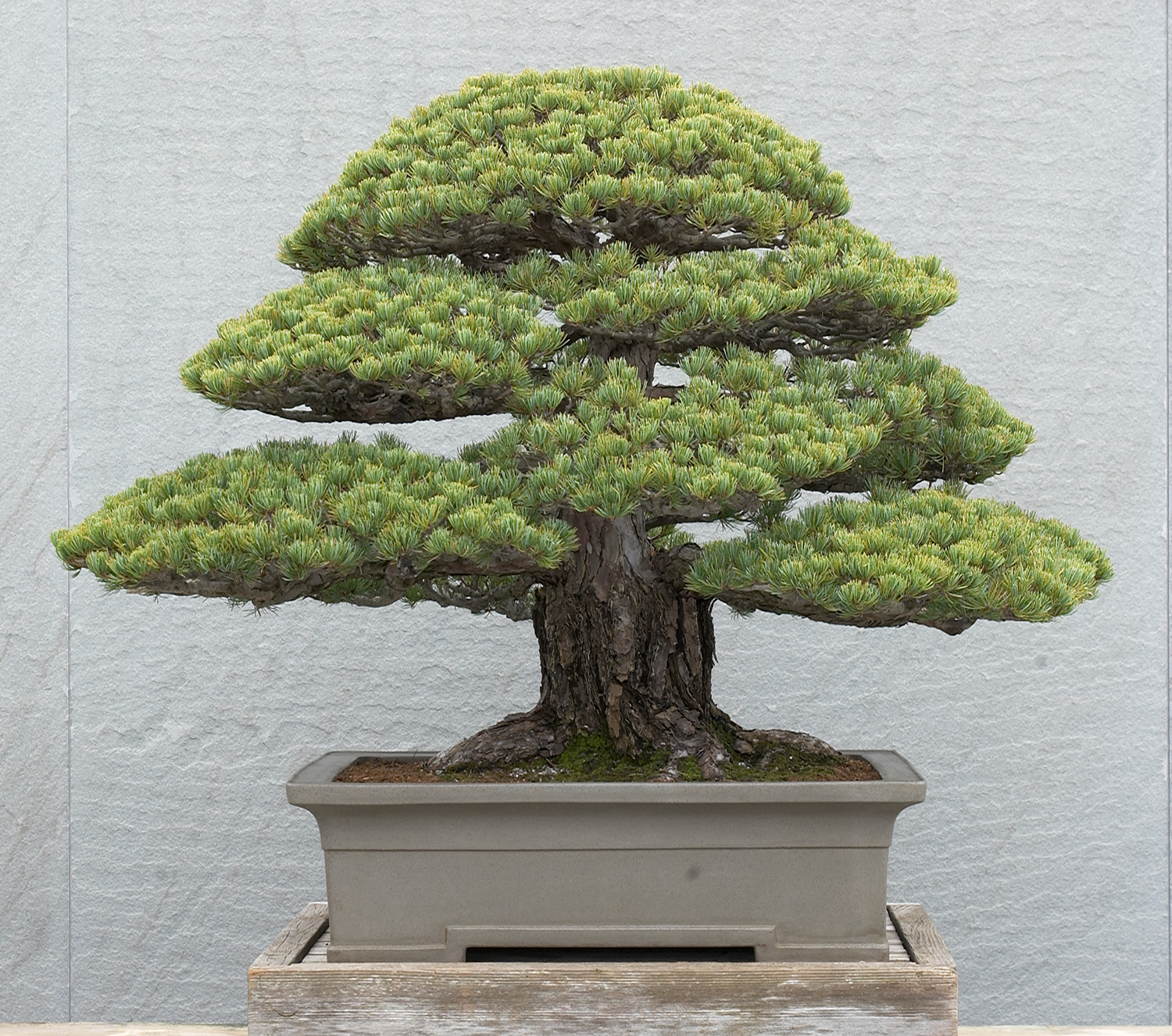
Japanese white pine
Pinus parviflora
Gift of Daizo Iwasaki, 1976
One of the most important elements of a bonsai is the quality of its surface roots. This pine has especially dramatic ones that seem to grab the earth.
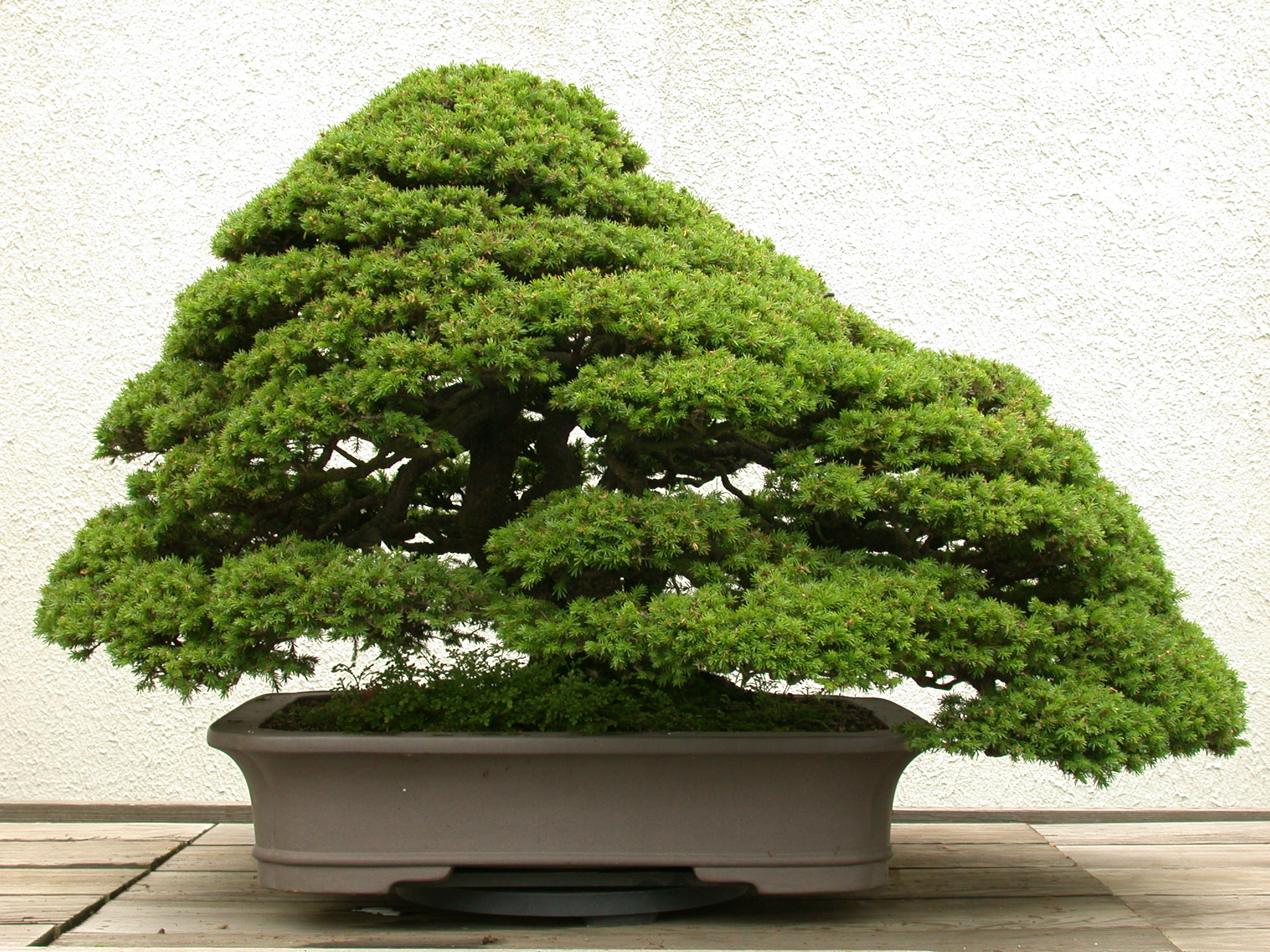
Red Ezo spruce
Picea glehnii
In training since 1925
Gift of Tokuei Tanaka, 1976
When this tree was collected in Japan, it was probably about 120 years old. It is difficult to know the exact age of a bonsai that first grew in the wild.

Hinoki-cypress
Chamaecyparis obtusa
In training since 1875
Gift of Shuhei Nagai, 1976
The way the bonsai artist thinned and shaped the foliage on this tree helps create the appearance of an ancient tree, which is a primary goal in bonsai.
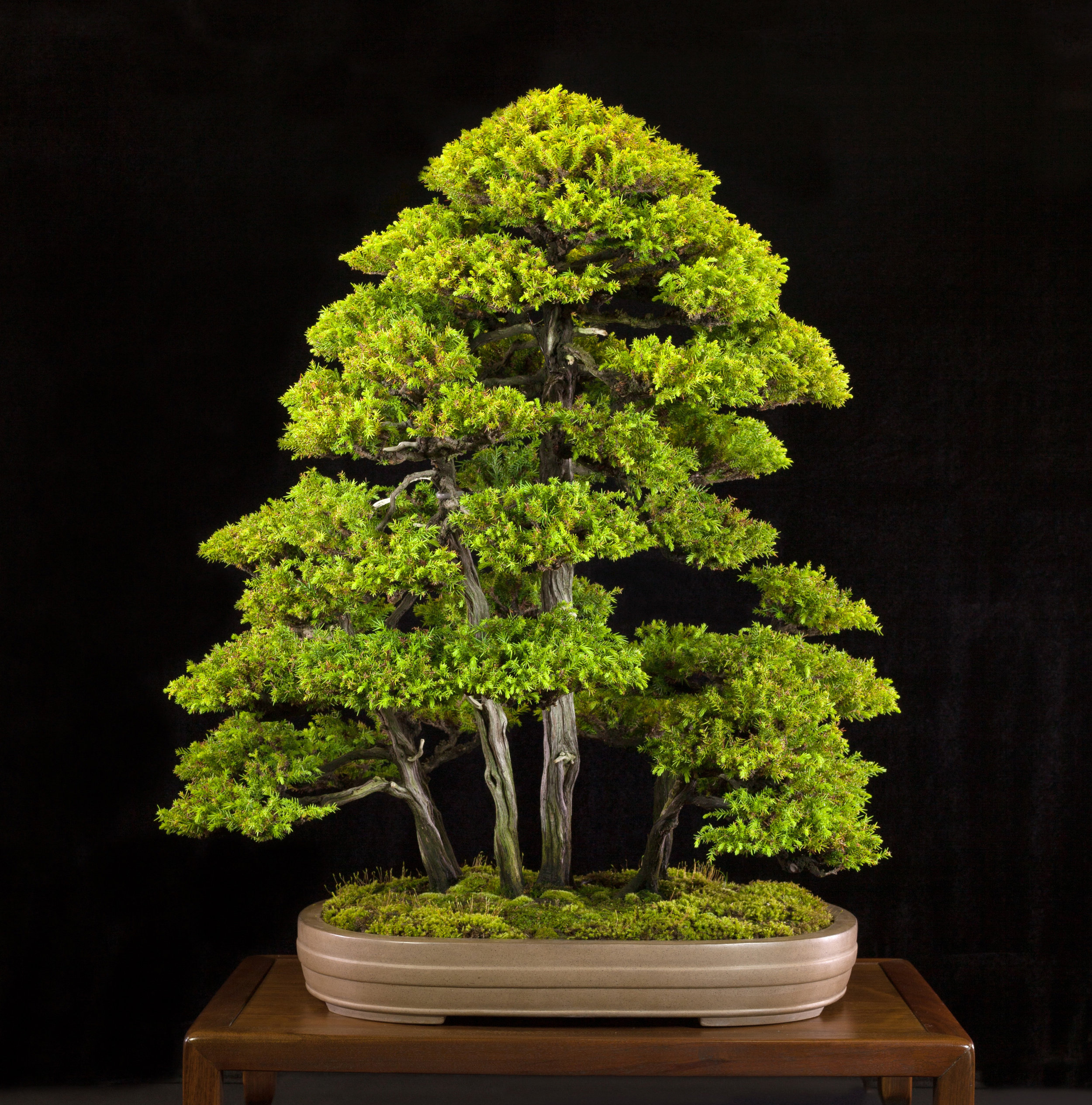
Cryptomeria
Cryptomeria japonica
In training since 1905
Gift of Eisaku Sato, 1976
This bonsai suggests a peaceful garden forest near a place of worship. In Japan, one often finds a temple or shrine nestled within a shady cryptomeria grove in the countryside.
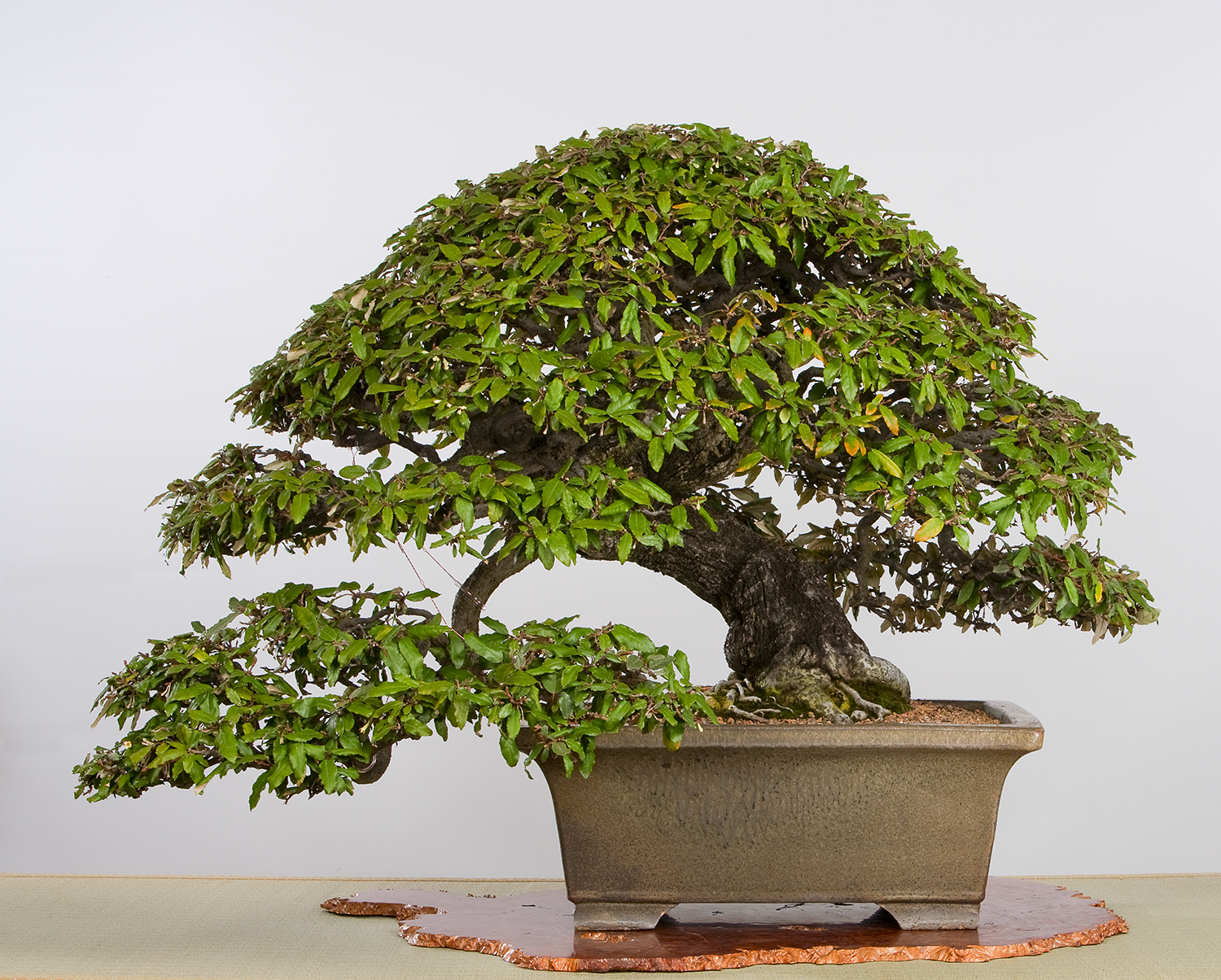
Thorny elaeagnus
Elaeagnus pungens
In training since 1825
Gift of Teisuke Takahashi, 1976
Look for berries in the springtime on this flowering and fruiting shrub. Started from a cutting in 1825, this plant has been cultivated as a bonsai through its entire life.

Sargent juniper
Juniperus chinensis var. sargentii
In training since 1905
Gift of Kenichi Oguchi, 1976
The design of the museum logo was inspired by this bonsai with its rhythmic lines of dead wood contrasting with green foliage pads.
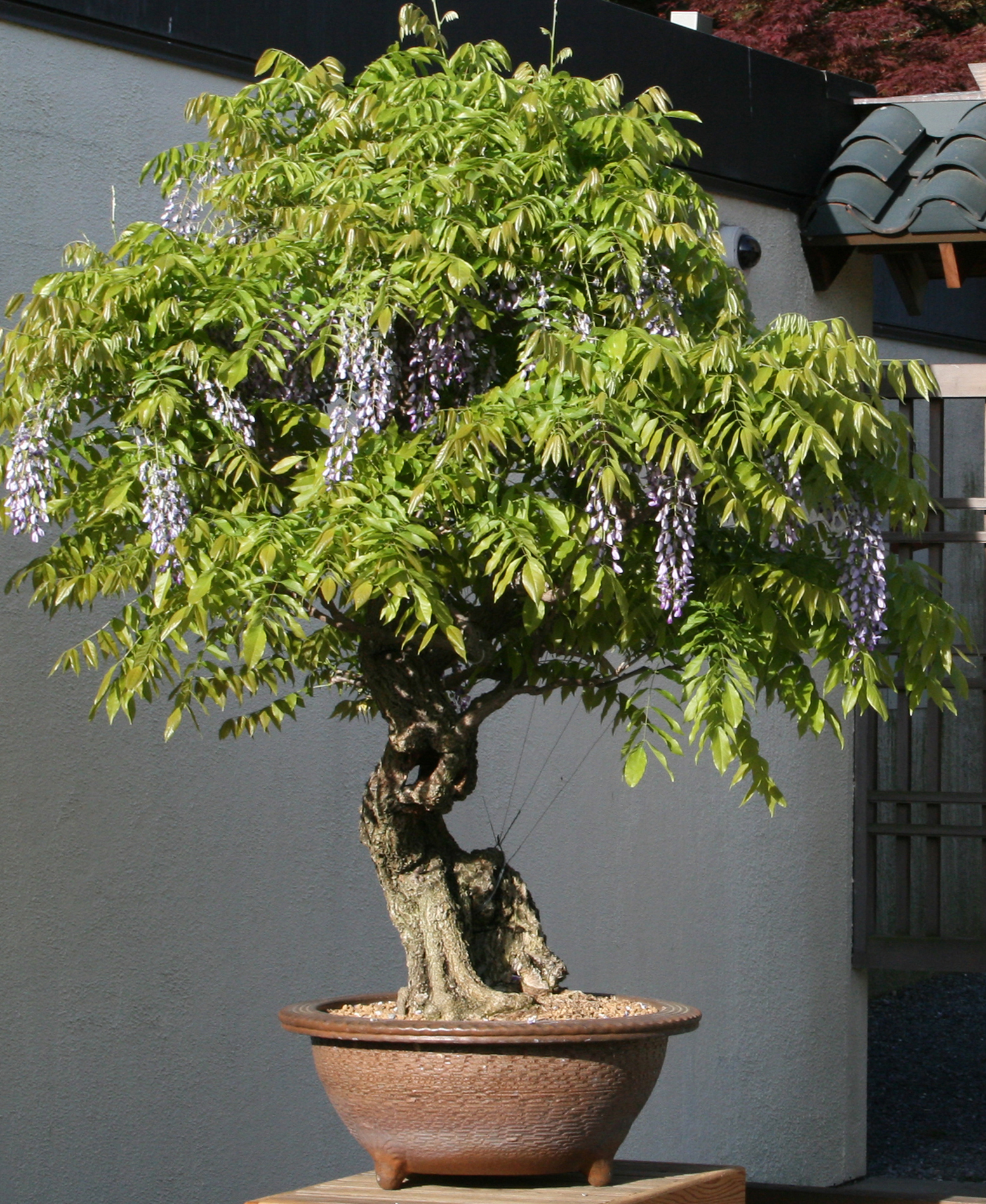
Japanese wisteria
Wisteria floribunda
In training since 1925
Gift of Kihei Tamura, 1976
Wisteria does not produce fine twigs, so it takes an especially skilled bonsai artist to create dense foliage when shaping it into a bonsai.
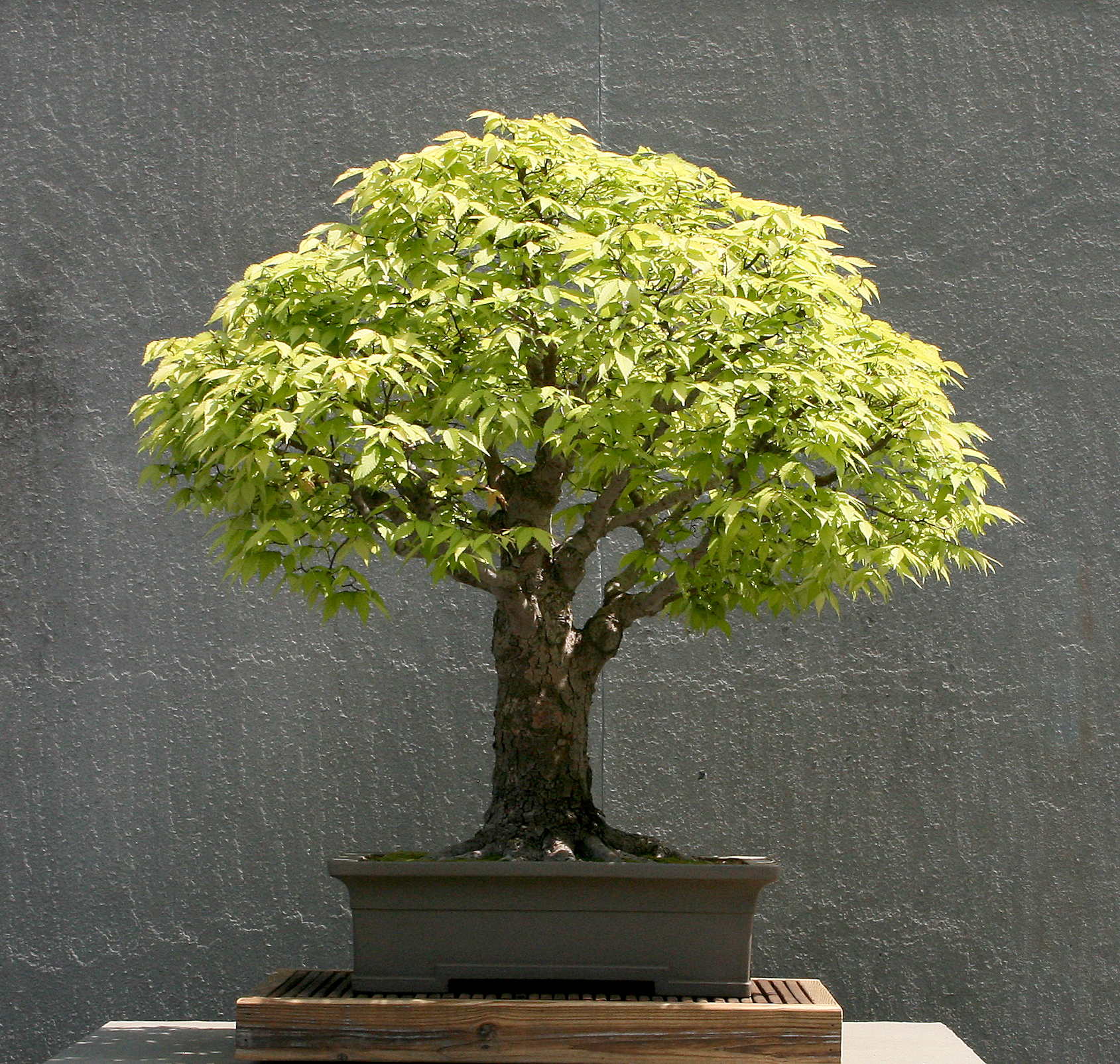
Japanese zelkova
Zelkova serrata
In training since 1895
Gift of Yoshibumi Itoigawa, 1976
This bonsai is only 4 feet tall, yet it gives the appearance of a giant tree with a thick trunk, powerful surface roots, and tapered branching.

Toringo crabapple
Malus toringo
In training since 1905
Gift of Shu’ichi Ueda, 1976
This crabapple has four season interest: white blossoms in spring; bright green leaves in summer; yellow fruits in autumn; and when its leaves fall in winter, the bent and craggy silhouette of an aged tree.
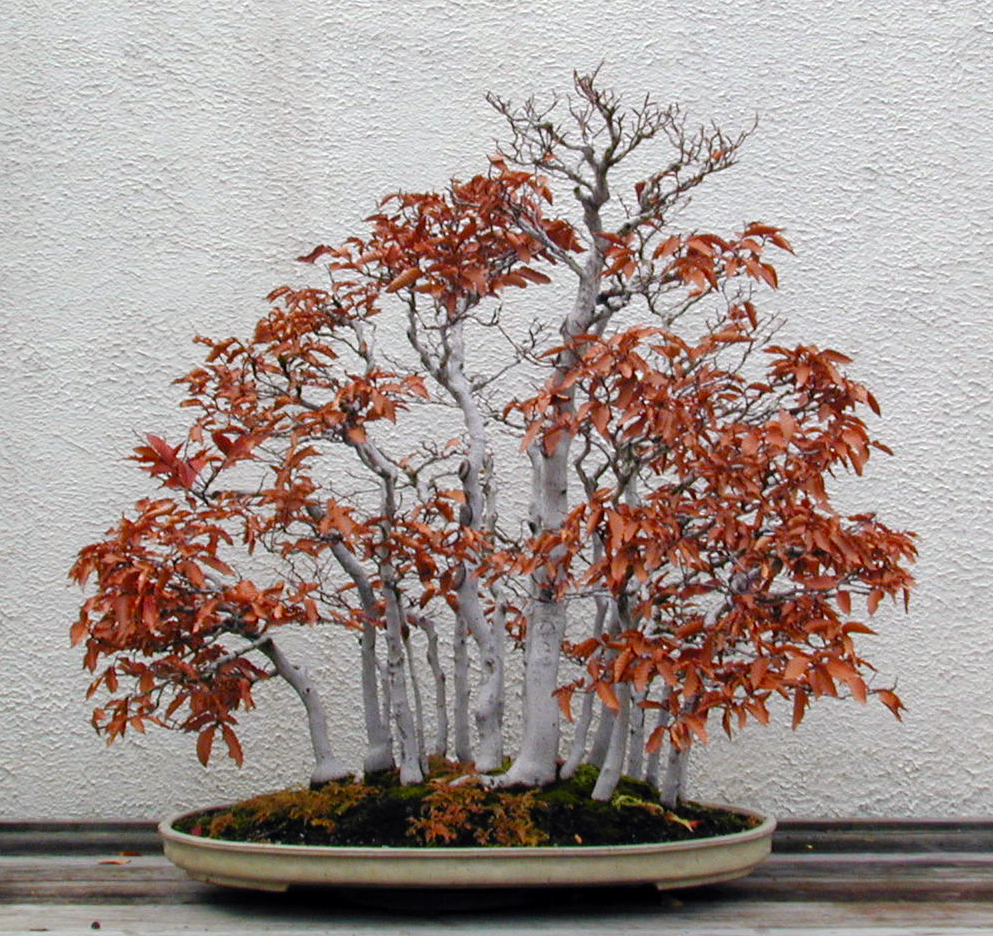
Japanese beech
Fagus crenata
In training since 1946
Gift of Kiyoshi Kawamata, 1976
This is an example of the classical forest style where you feel as if you are inside the forest looking out—the trees nearest you appear un-obstructed and large; the ones in back are smaller.

Ginkgo
Ginkgo biloba
In training since 1926
Gift of Kiku Shinkai, 1976
Ginkgo bonsai make their best show in autumn when their bright green leaves gradually turn a brilliant golden yellow.

Ginkgo
Ginkgo biloba
In training since 1896
Gift of Masayuki Fujio, 1976
Bulbous growths, known as chi chi, typically appear on older ginkgo trees like this bonsai. From these, ariel roots may develop to help the tree survive in times of environmental stress.

Chinese-quince
Pseudocydonia sinensis
In training since 1875
Gift of Etsusaburo Shiina, 1976
The techniques of bonsai can, in some species, reduce the size of the leaves, but fruit and flowers remain the same size as those on trees growing naturally. This quince produces 5-inch fruits.
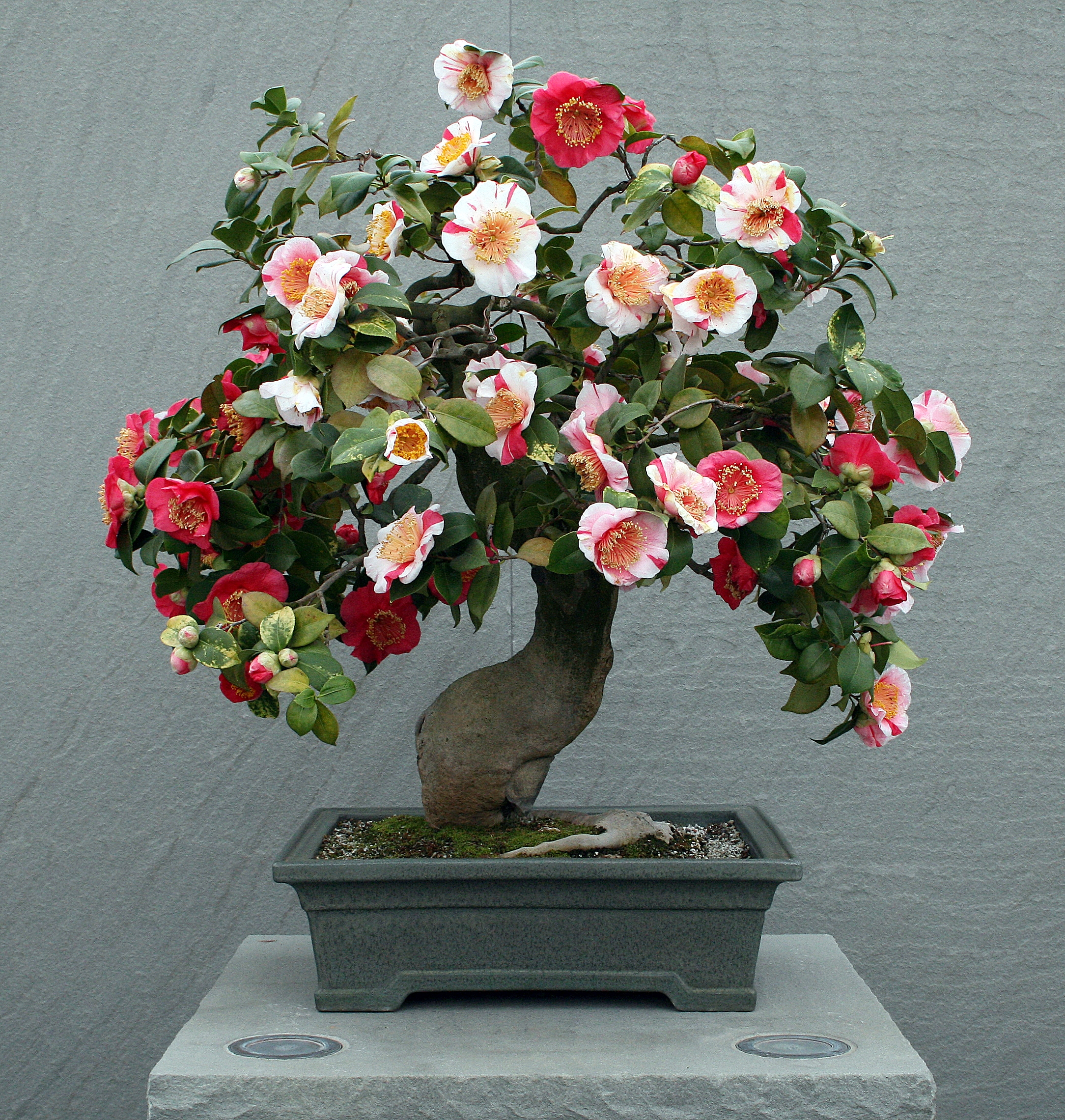
Higo camellia
Camellia japonica (Higo Group) 'Yamato-nishiki'
In training since 1876
Gift of Nippon Bonsai Kyodo Kumiai, Kyushu Branch (Nippon Bonsai Growers Cooperative), 1976
The flowers of the Higo camellia are distinctive for the bold sunburst pattern of yellow stamens at the center of the petals. In Japan, these winter blossoms are associated with the bravery of samurai.
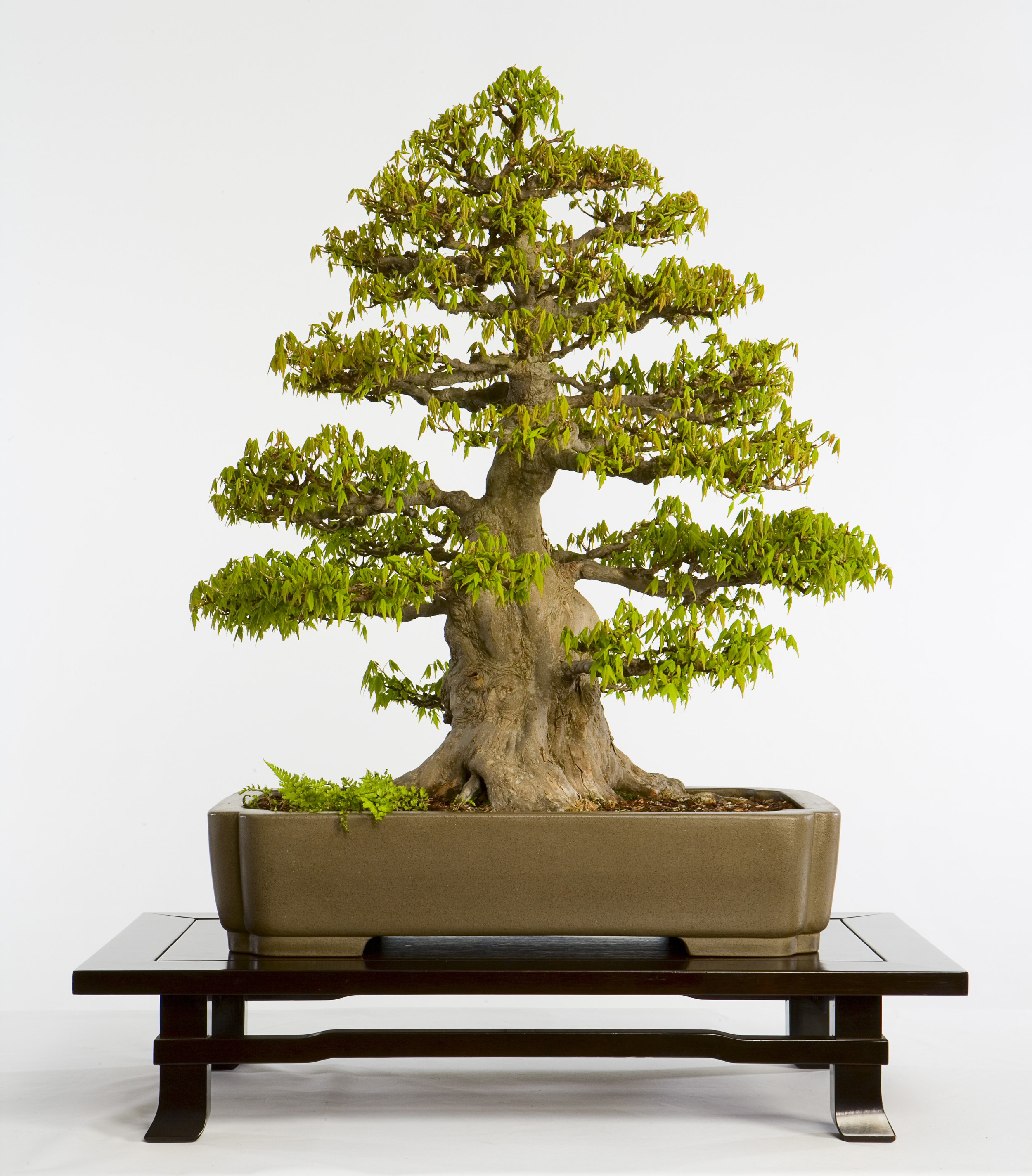
Trident maple
Acer buergerianum
In training since 1856
Gift of Tanekichi Isozaki, 1976
This masterpiece bonsai shows the artist’s expertise in training a seedling to become a majestic tree with flaring surface roots, a powerful trunk tapering gracefully to the apex, and horizontal branches with finely articulated twigging.
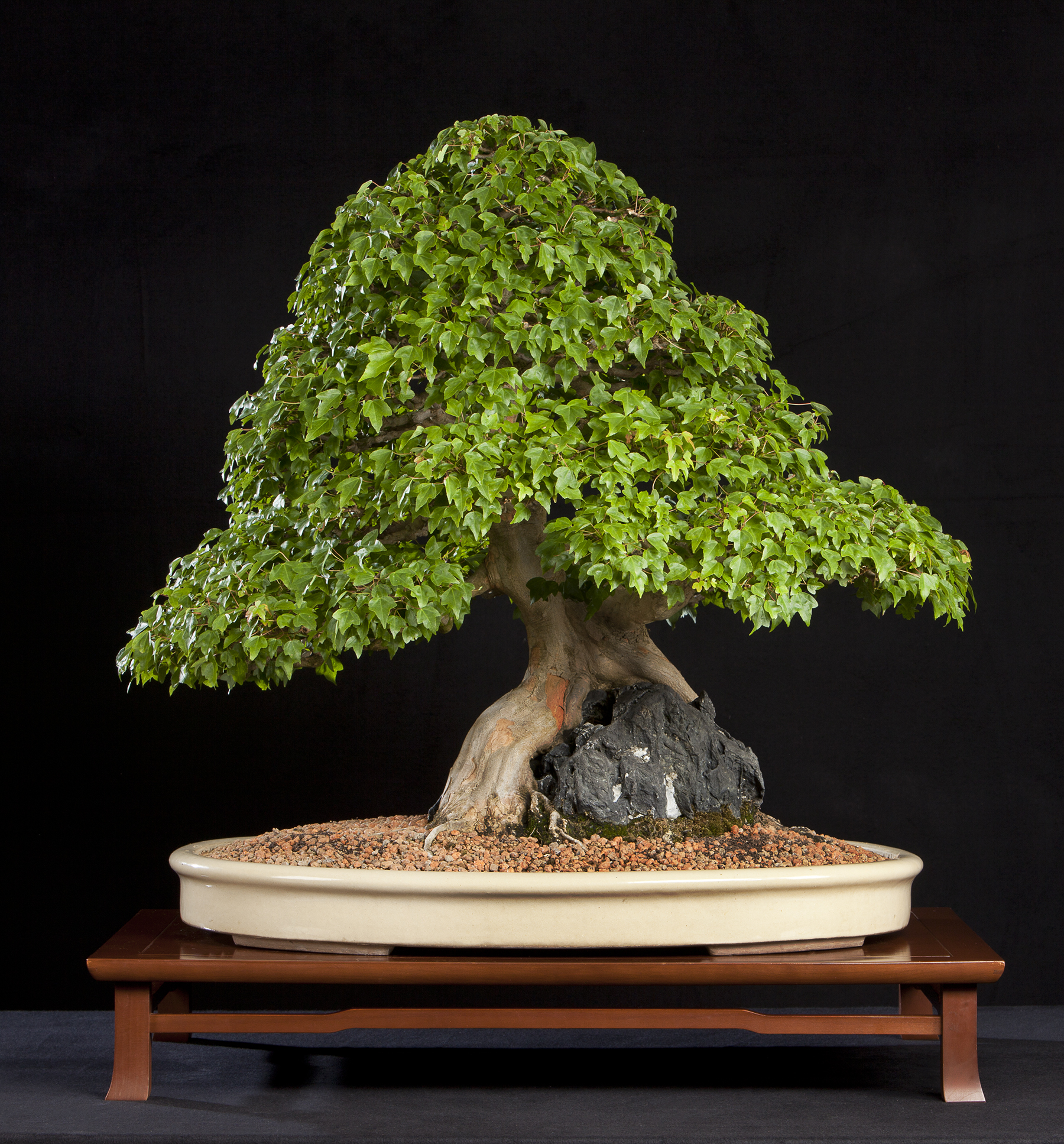
Trident maple
Acer buergerianum
In training since 1916
Gift of Takeo Fukuda, 1976
In this “root-over-rock” style, the artist grew a young plant on top of a rock, gradually removing soil as the roots matured. In nature, maple roots sometimes grasp a rock just like this.

Japanese maple
Acer palmatum
In training since 1906
Gift of Ryutaro Azuma, 1976
Japanese maple is one of the finest materials for bonsai because when cultivated as a bonsai it produces smaller leaves than if growing in the ground.
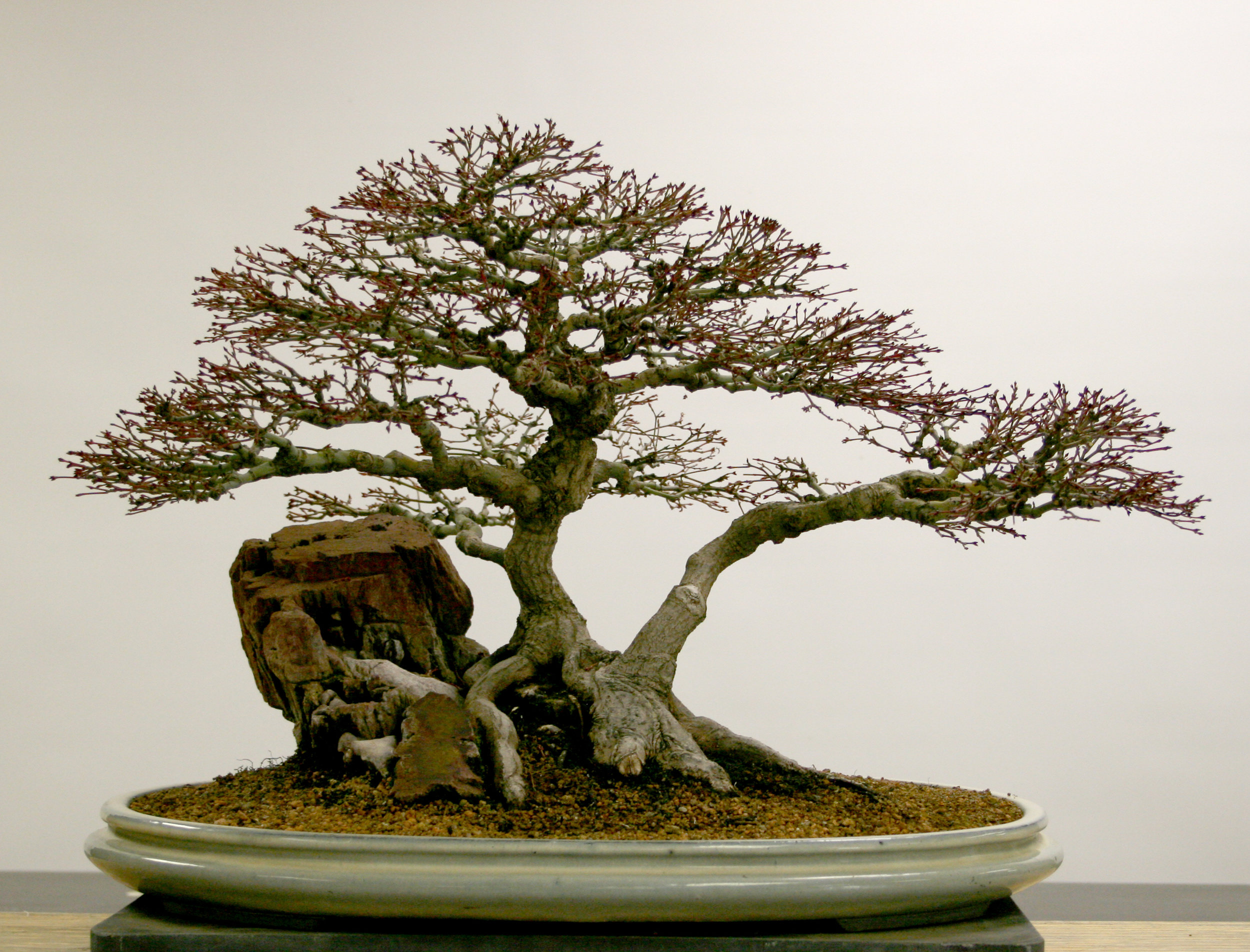
Japanese maple
Acer palmatum 'Kiyohime'
In training since 1946
Gift of Akiko Matsudaira, 1976
Trees with fine twigs, small leaves, and spreading roots are good matches for smaller bonsai. Certain cultivars with these characteristics, like this one, are favorites for creating miniature scenes.

Japanese black pine
Pinus thunbergii
Gift of Goro Ito, 1976
The slant-style in bonsai represents the forces of nature on mature trees: strong winds, heavy snows, rock slides, or the need to grow towards the light are all reasons for a tree to lean.

Japanese maple
Acer palmatum Yatsubusa Group
In training since 1946
Gift of Shintaro Abe, 1976
The small leaves, tiny twigs and strong roots of dwarf maple varieties make them perfect material for the bonsai artist whose goal is to create the illusion of a large, mature tree.
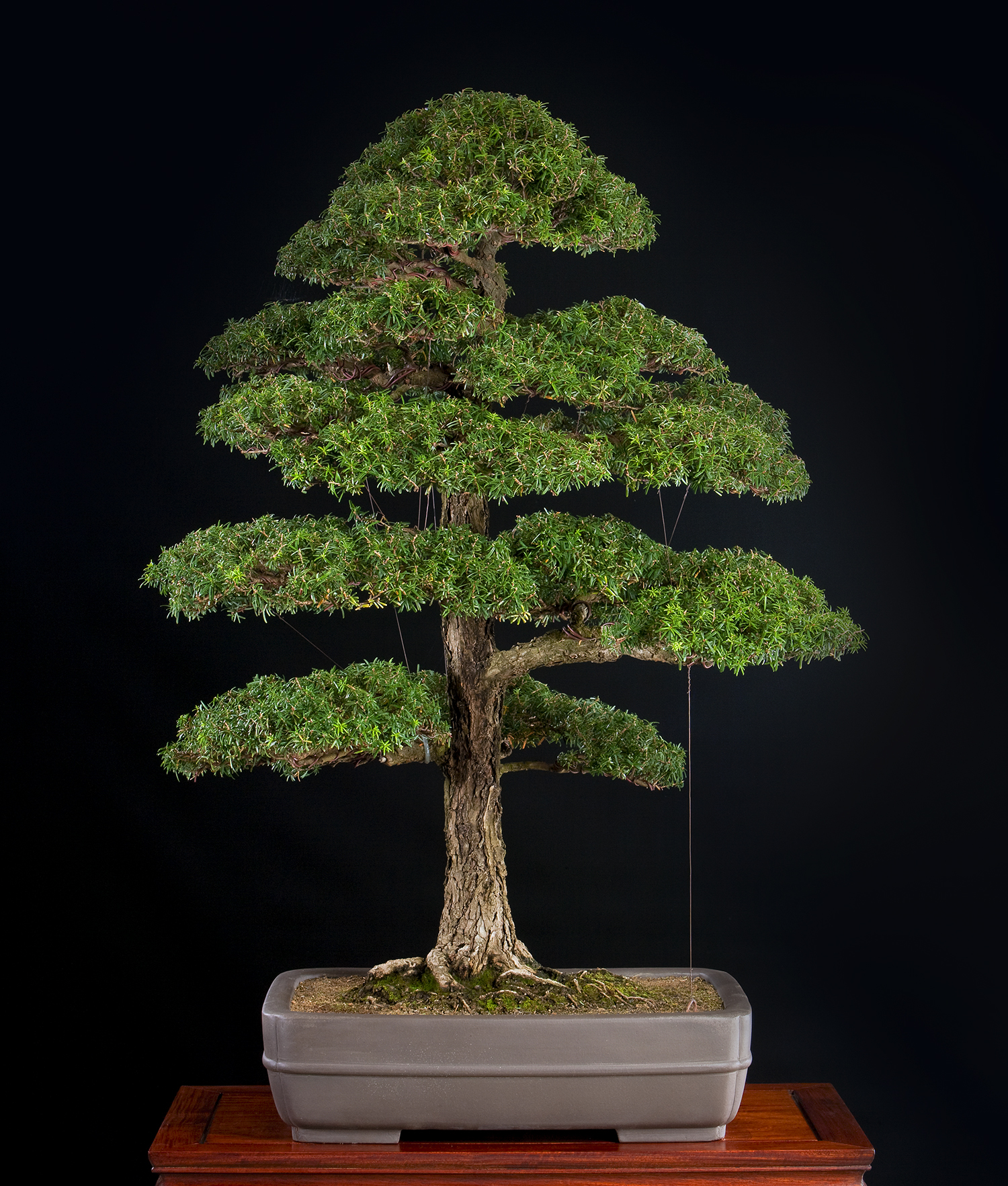
Japanese hemlock
Tsuga diversifolia
In training since 1926
Gift of Royal Household of Princess Chichibu, Japan, 1976
Japan’s Princess Chichibu (1909-1995) was a well-known patron of the art of bonsai. She donated this hemlock from her royal collection as a part of Japan's Bicentennial gift to the United States.
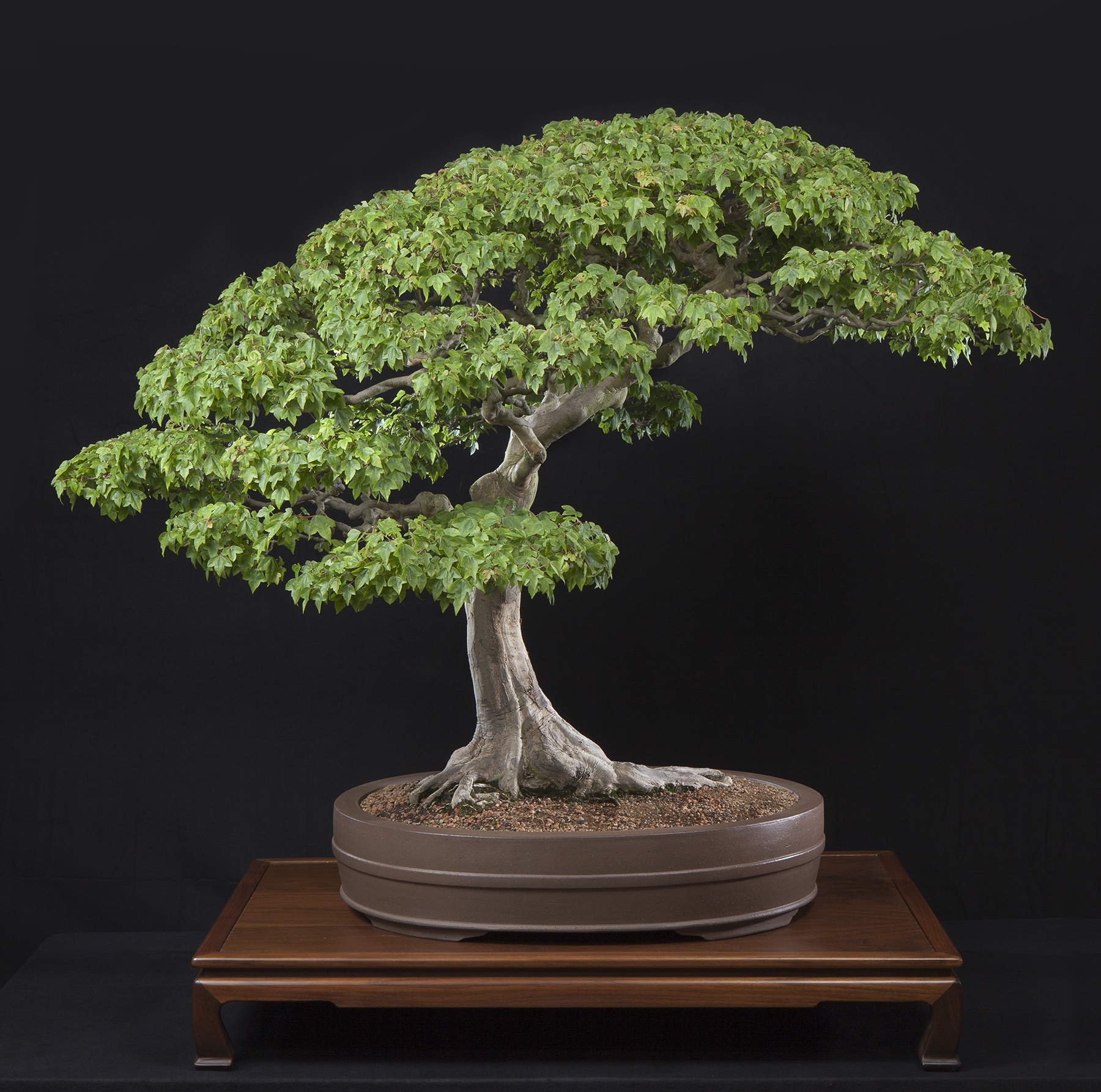
Trident maple
Acer buergerianum
In training since 1895
Gift of Royal Household of Prince Takamatsu, Japan, 1976
One of three trees from the Imperial Family included in Japan’s 1976 Bicentennial gift, this majestic maple is from the collection of Prince Takamatsu (1905-1987) and was trained as a bonsai from a seedling.
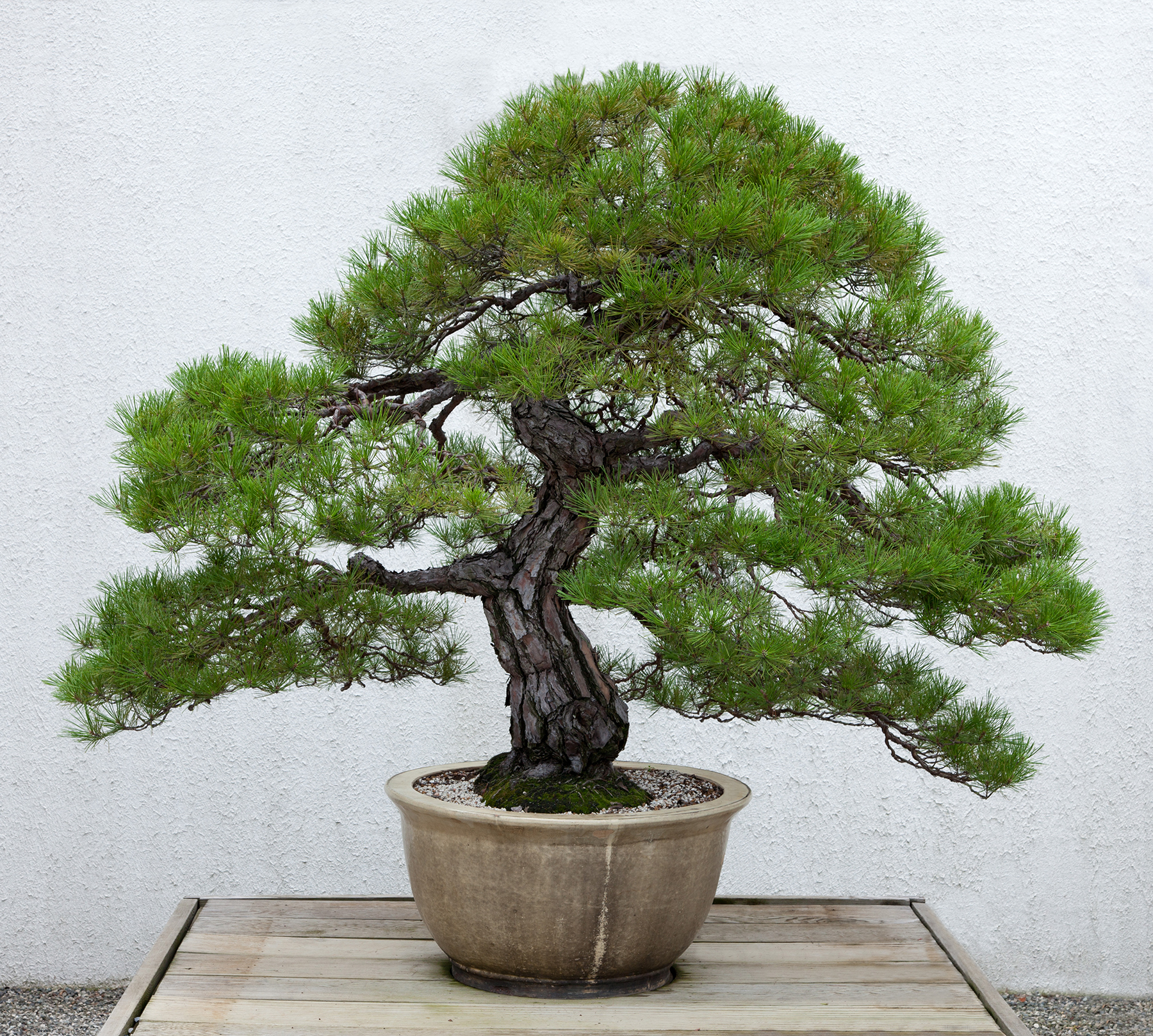
Japanese red pine
Pinus densiflora
In training since 1795
Gift of the Imperial Household, Japan, 1976
It was an unprecedented honor for the Emperor of Japan to include a tree from the Imperial Collection as part of his country’s gift to the United States in 1976—none had ever before left Japan.
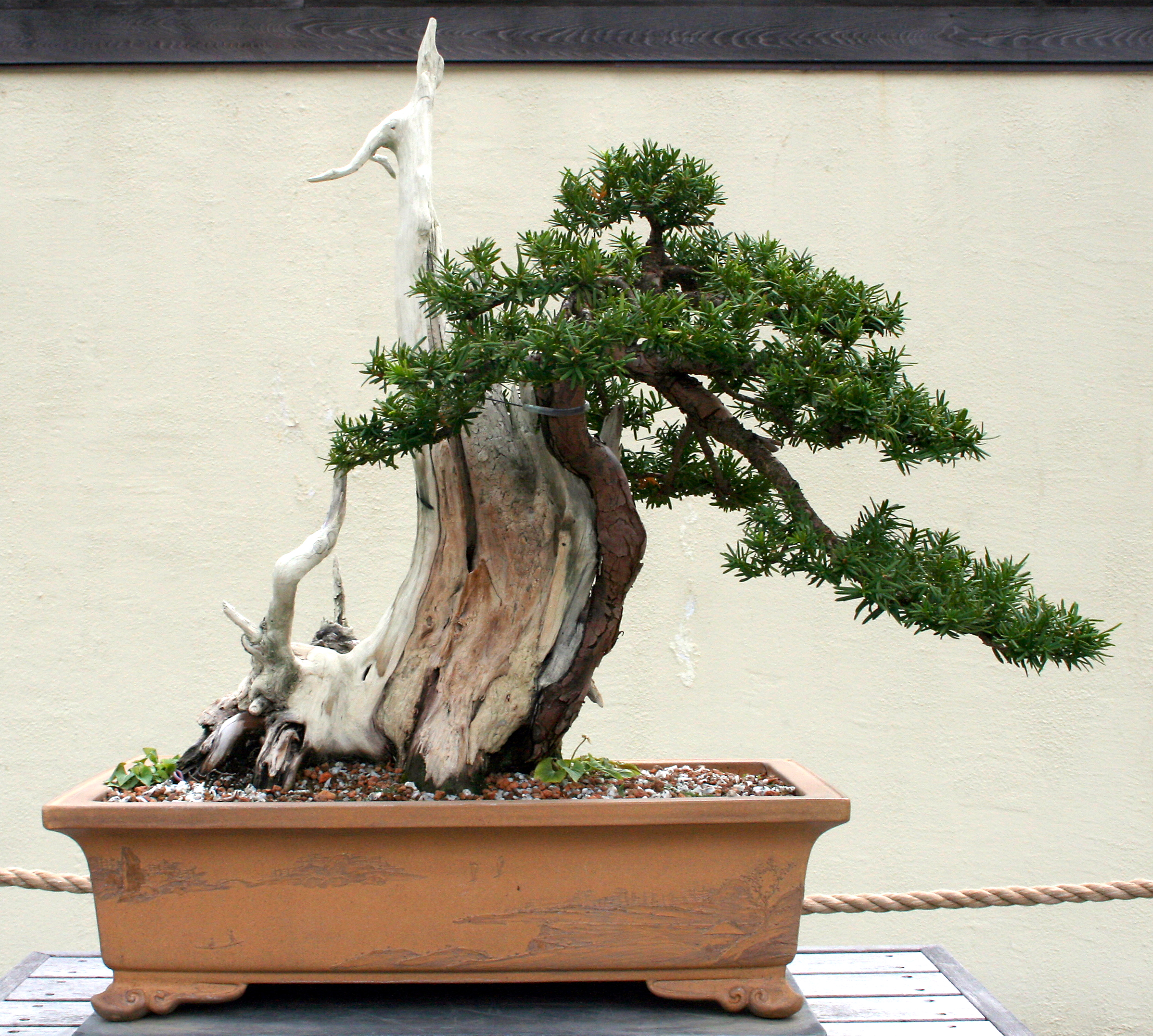
Japanese yew
Taxus cuspidata
In training since 1966
Gift of Reiji Takagi, 1998
This tree was originally collected on the northern Japanese island of Hokkaido. The bonsai artist has carved the dead portions to resemble naturally weathered dieback on an old tree.
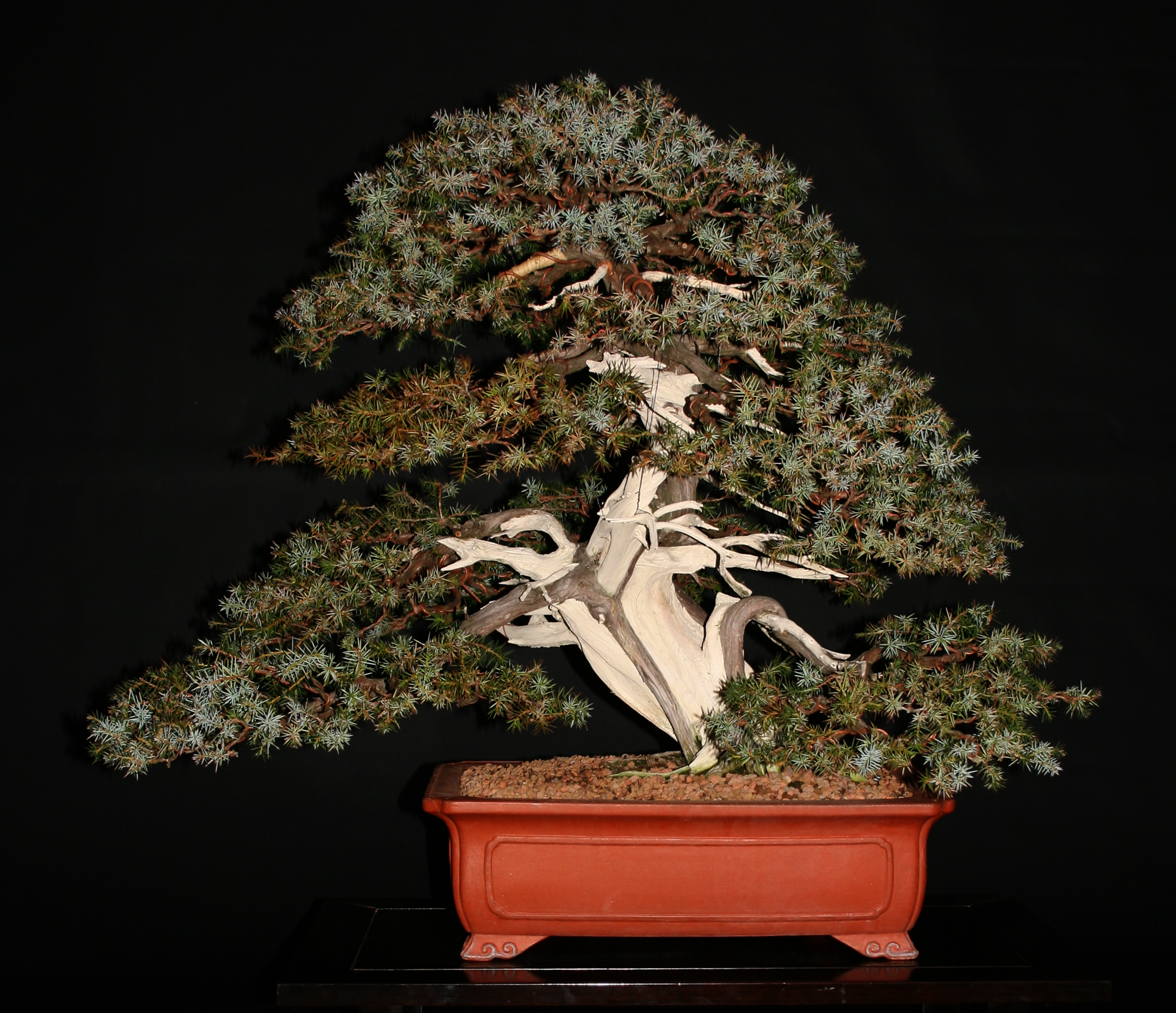
Needle juniper
Juniperus rigida
In training since 1966
Gift of Governor Yoshihiko Tsuchiya, 1998
Before it became a bonsai, this tree was about 250 years old. It was collected from a rugged coastal area on the Sea of Japan.
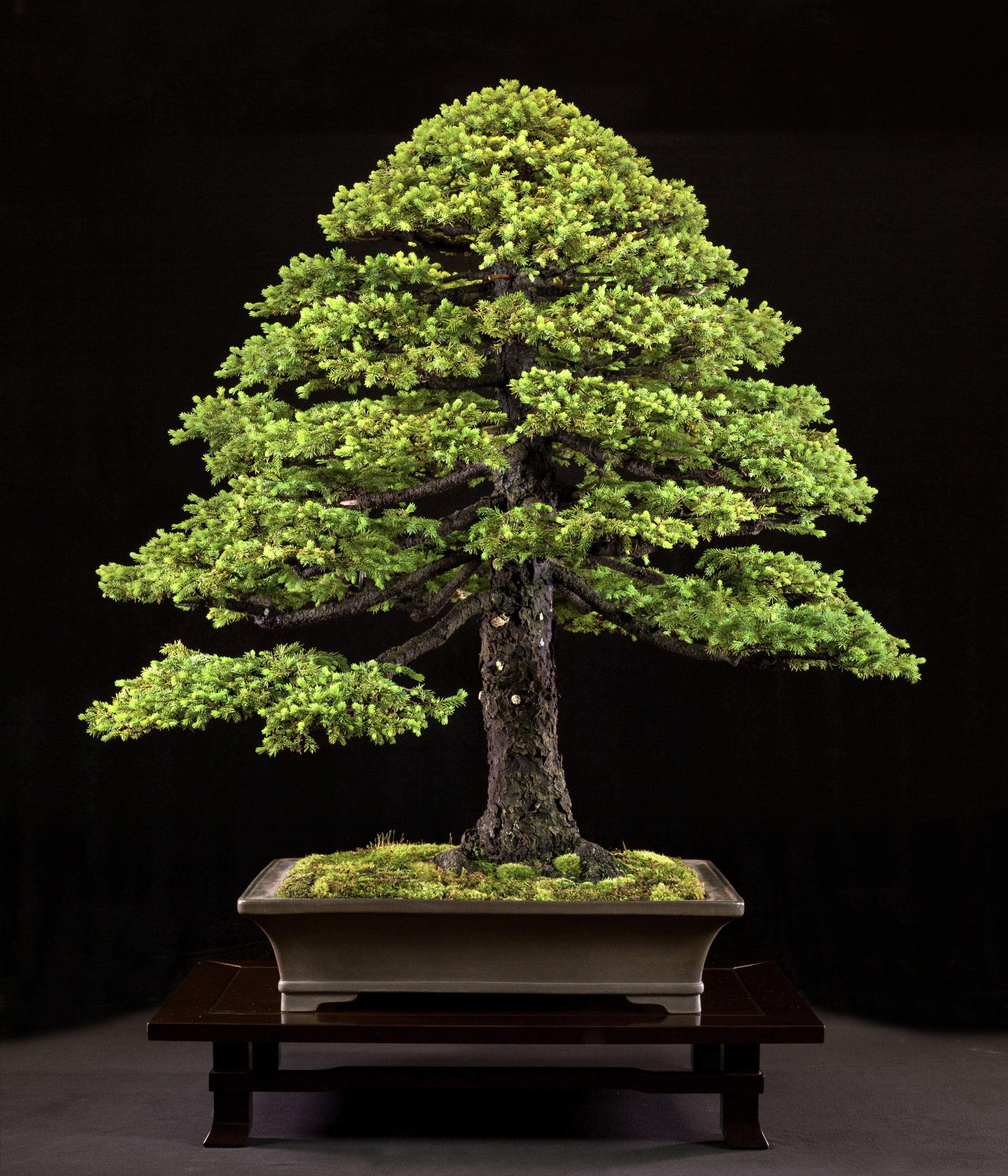
Red Ezo spruce
Picea glehnii
In training since 1939
Gift of Saburo Kato, 1998
This tree, collected and styled by renowned Japanese bonsai master Saburo Kato, was an official gift from Japanese Prime Minister Obuchi to President Clinton.
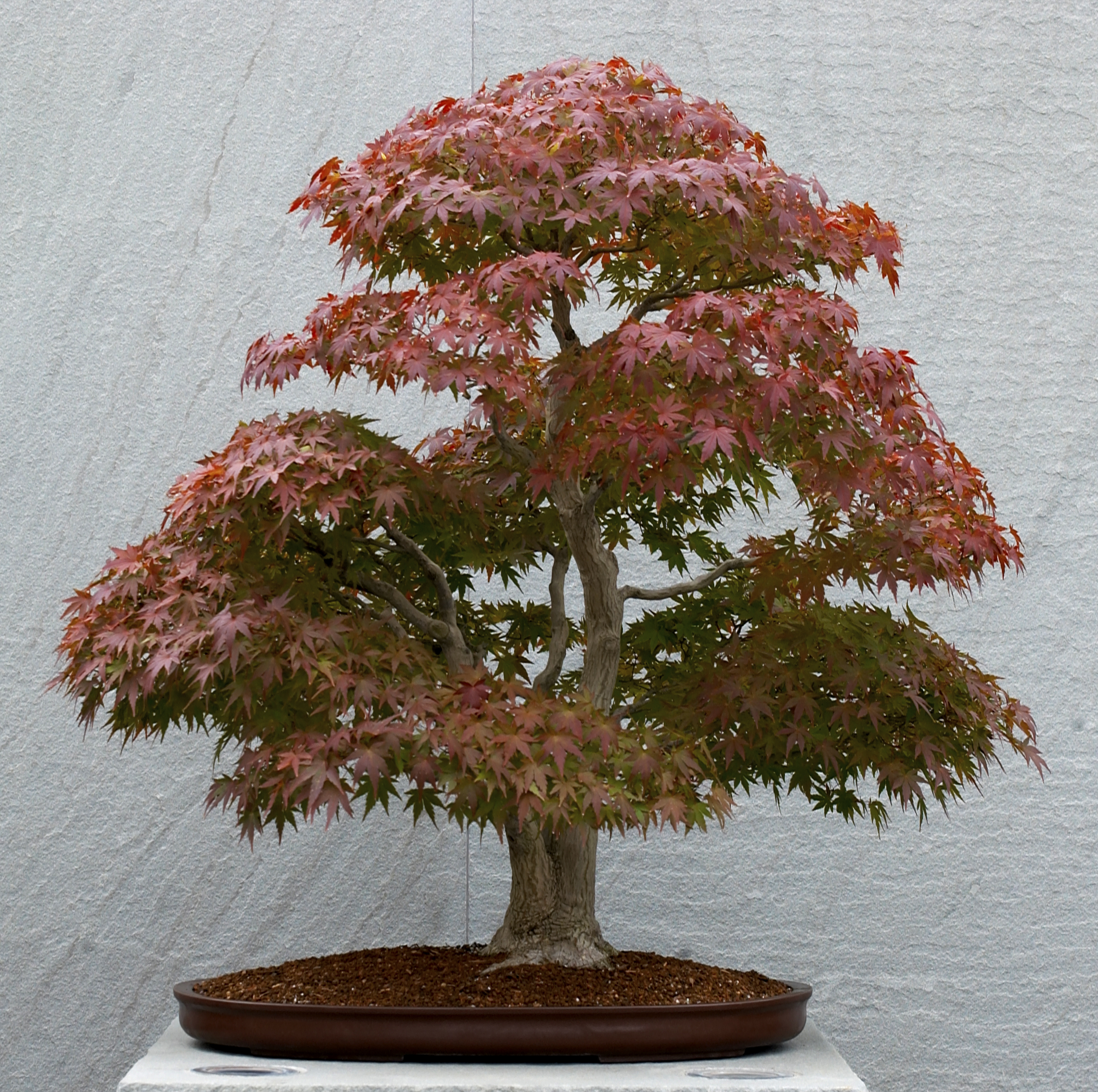
Japanese maple
Acer palmatum
In training since 1939
Gift of Prime Minister Keizo Obuchi, 1999
A gift from Japanese Prime Minister Obuchi's personal collection, this bonsai has the graceful shape of a maple growing in an open field.
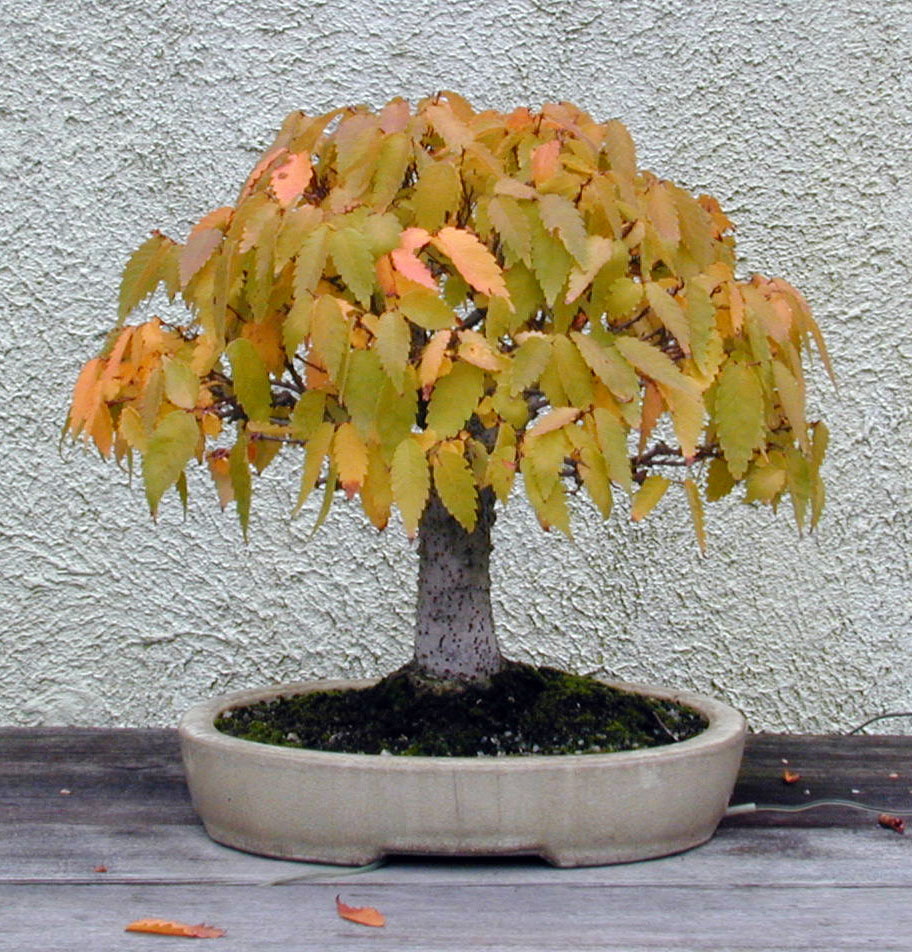
Japanese zelkova
Zelkova serrata
In training since 1984
Gift of Prime Minister Keizo Obuchi, 1999
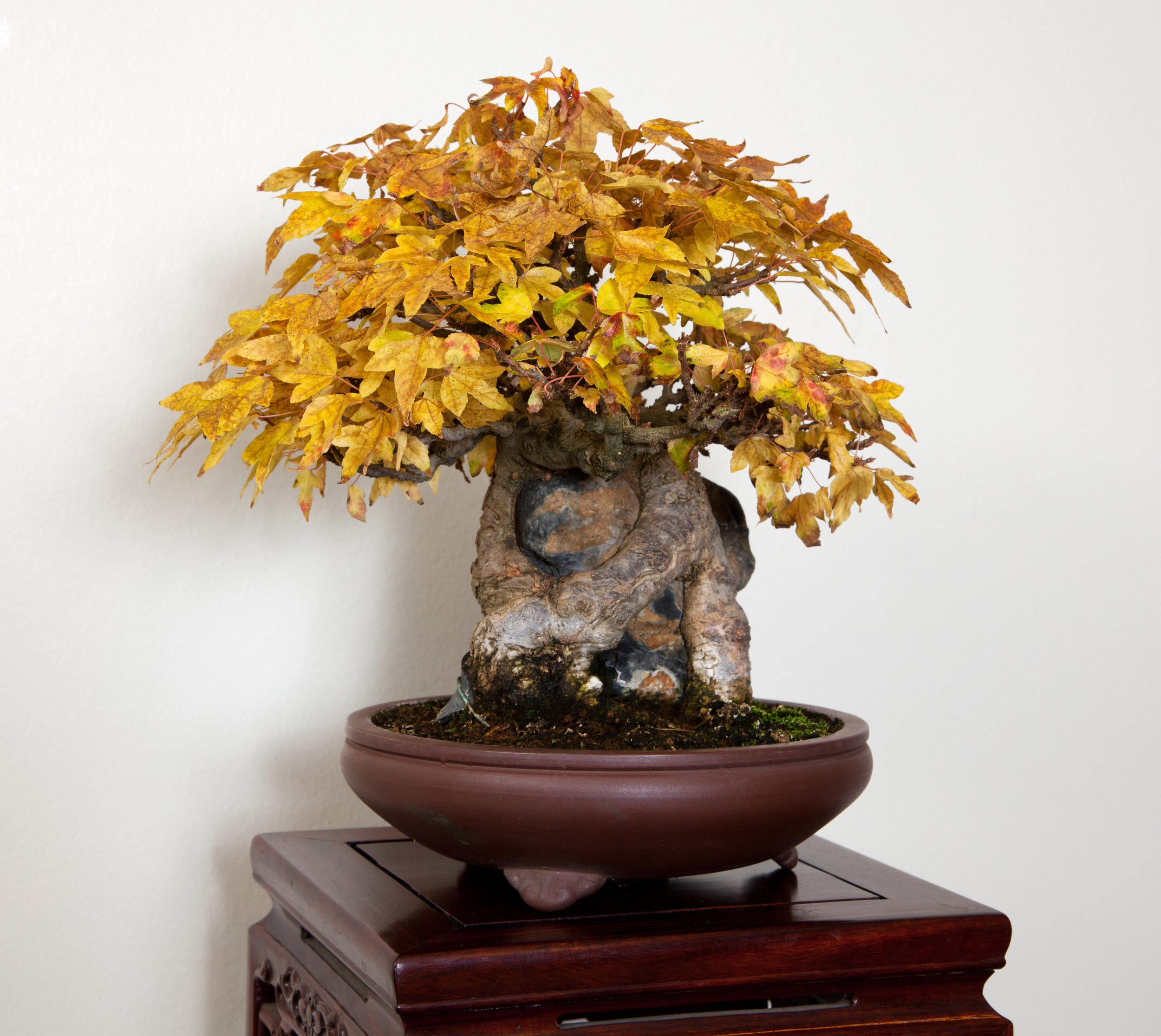
Trident maple
Acer buergerianum
In training since 1919
Gift of Prime Minister Keizo Obuchi, 1999
This shohin bonsai has been trained from a seedling to grow over a rock.

Satsuki azalea 'Korin'
Rhododendron (Satsuki Group) 'Korin'
Training age unknown
Gift of Hirozumi Ichihara, 2000
Korin is a type of Satsuki azalea cultivated by bonsai aritsts for its small leaves and flowers. In June, the leaves will not be visible when it is covered in pink blossoms.
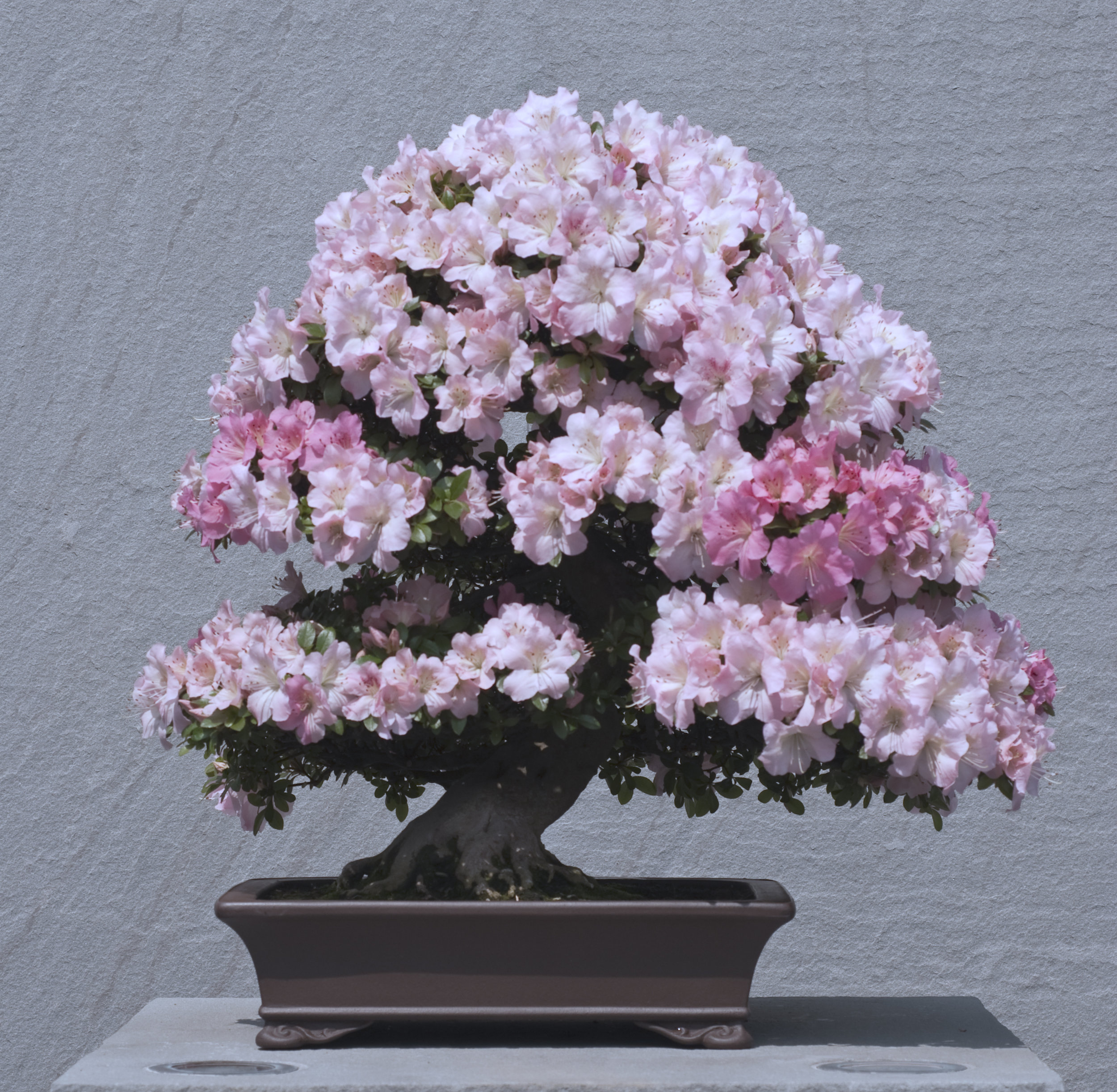
Satsuki azalea 'Gyoten'
Rhododendron (Satsuki Group) 'Gyoten'
Training age unknown
Gift of Shogo Watanabe, 2000
Satsuki azaleas bloom later than most other azaleas and often produce flowers of different colors on the same plant—a prized feature in bonsai.
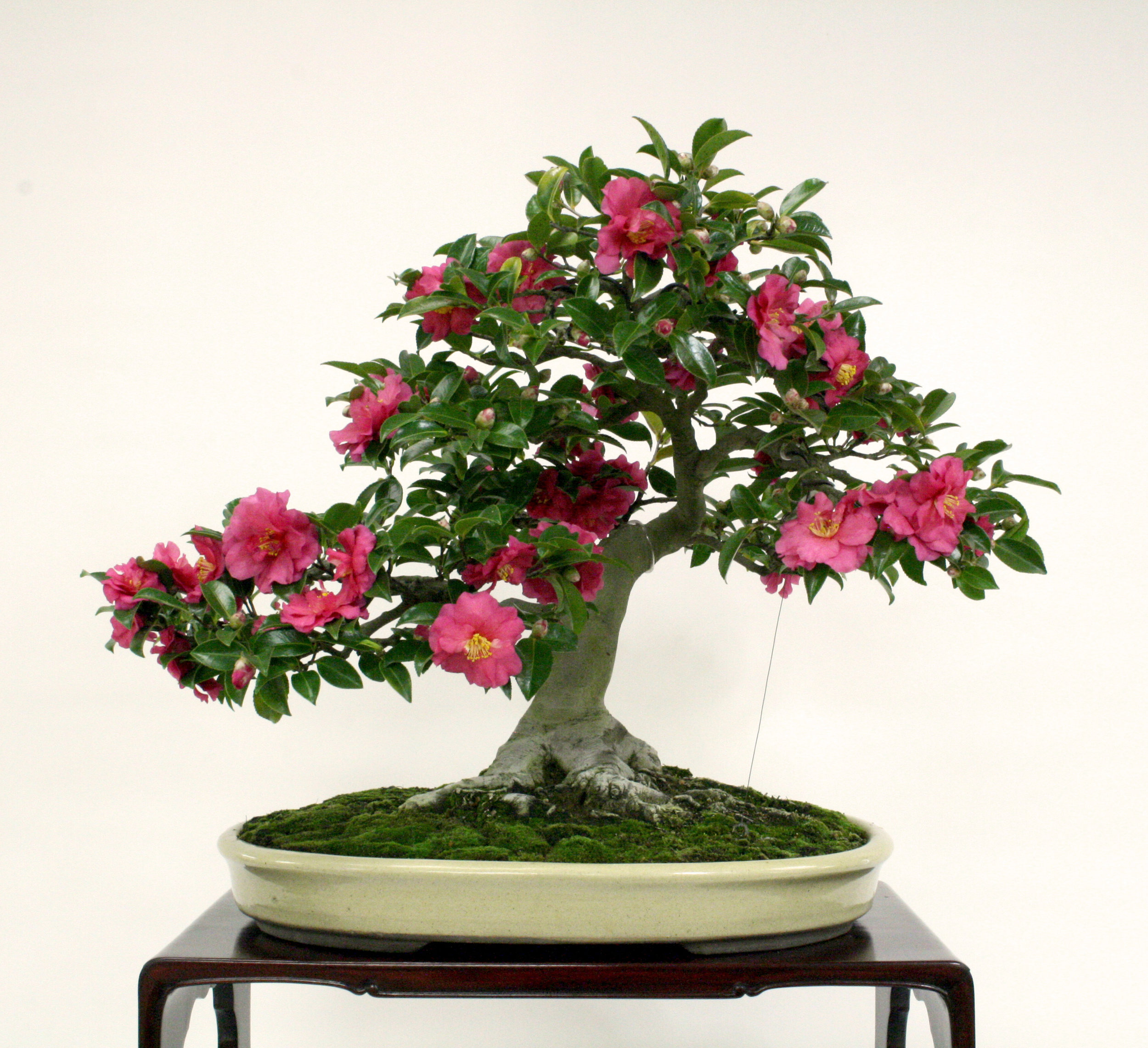
Camellia x hiemalis 'Shishigashira'
In training since 1950
Gift of Susumu Nakamura, 2000
The small leaves and flowers of this dwarf camellia make it excellent material for bonsai. Its semi-double pink blossoms usually appear in November.

Eurya
Eurya emarginata
In training since 1970
Gift of Susumu Nakamura, 2000
A member of the tea family, this evergreen shrub grows in thickets on mountain slopes, in rock crevices, and along seacoasts in China, Japan, and Korea.
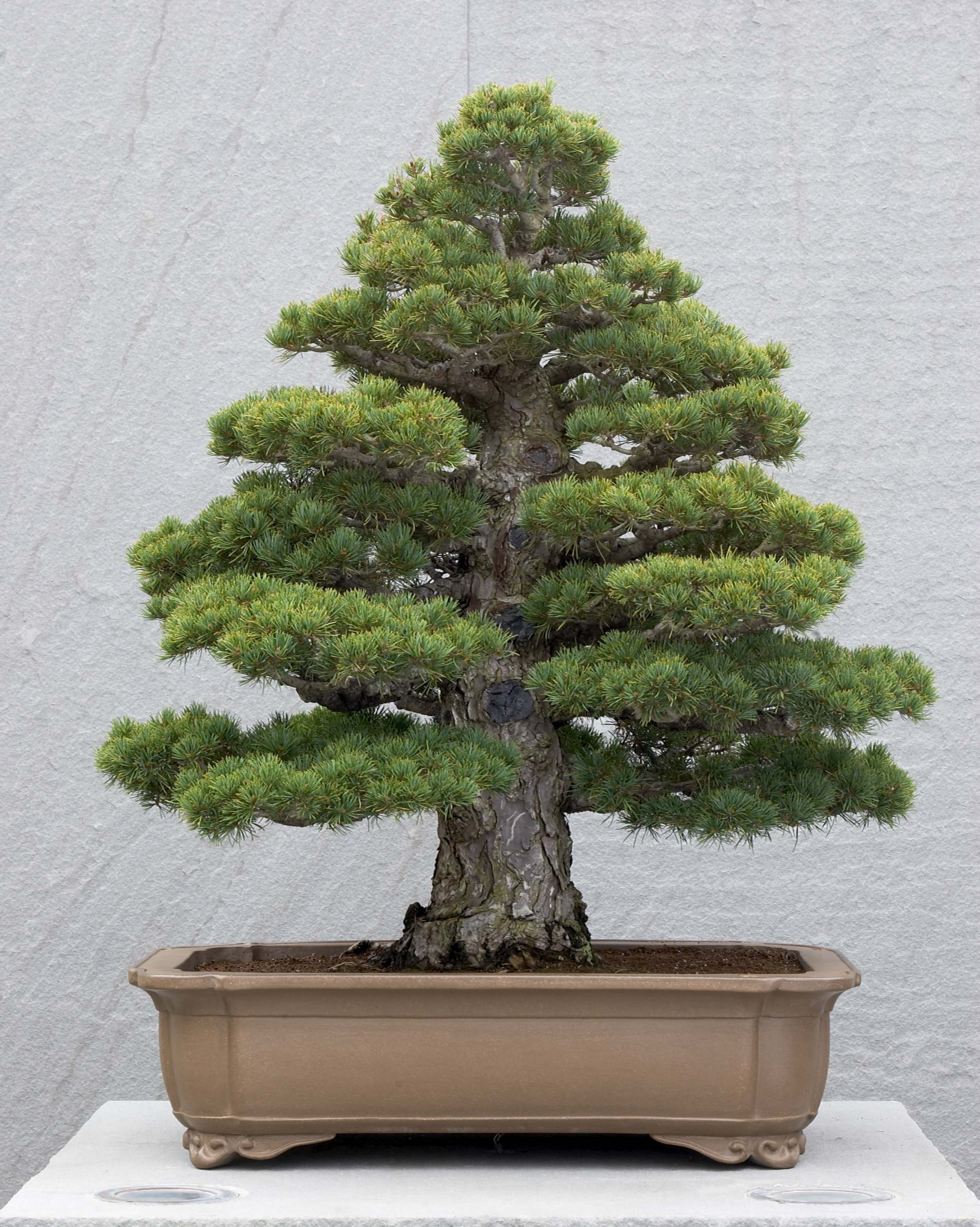
Japanese white pine
Pinus parviflora 'Koko-no-e'
Train age unknown
Gift of Daizo Iwasaki, 2004
The branches of this pine were grafted onto the trunk at 90-degree angles to create a style of bonsai known as formal upright.
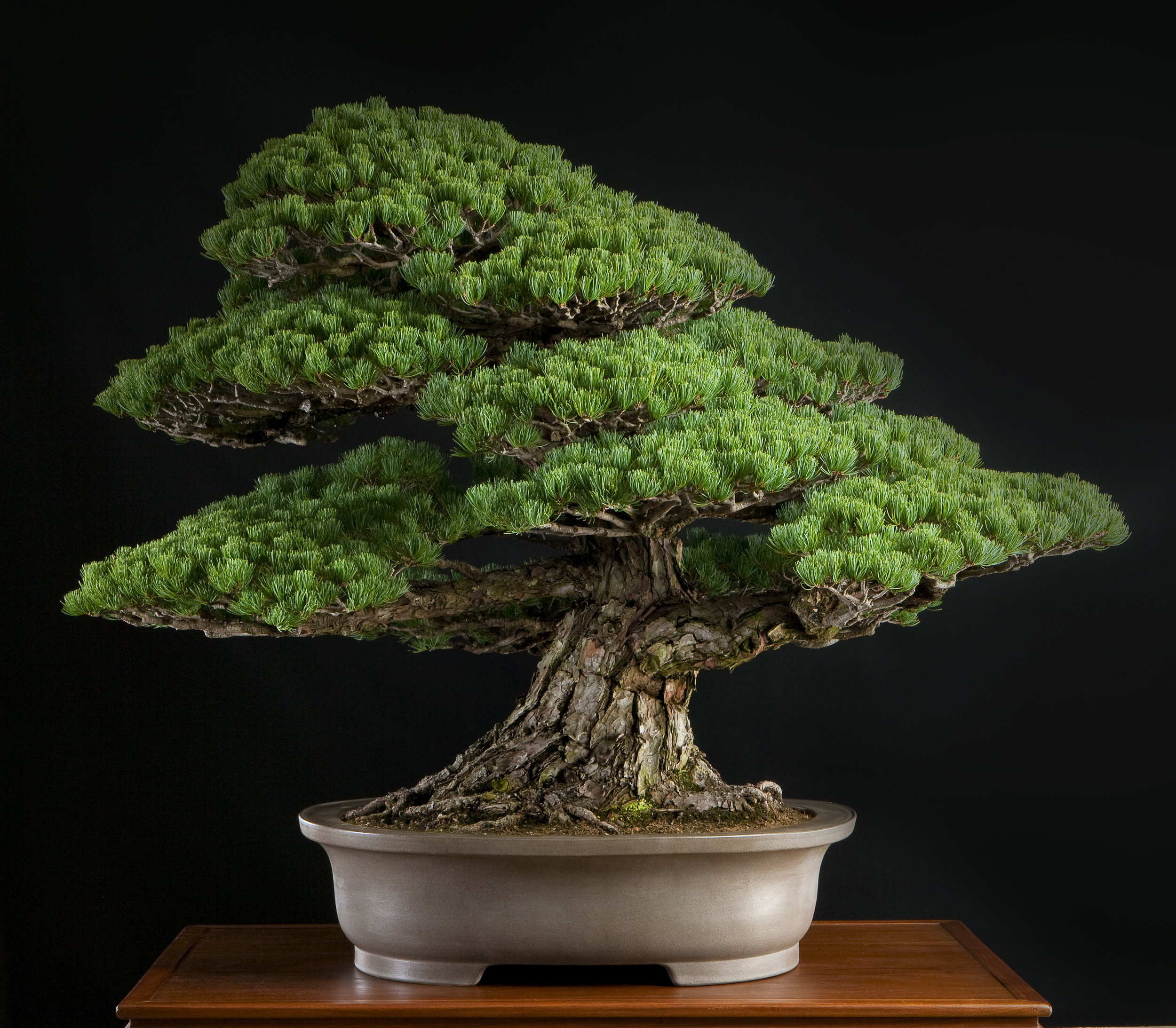
Japanese white pine
Pinus parviflora
Training age unknown
Gift of Daizo Iwasaki, 2004
Note that in the slant style of bonsai, though the trunk of the tree is leaning, the design of the branches and foliage provides a feeling of balance and stability.
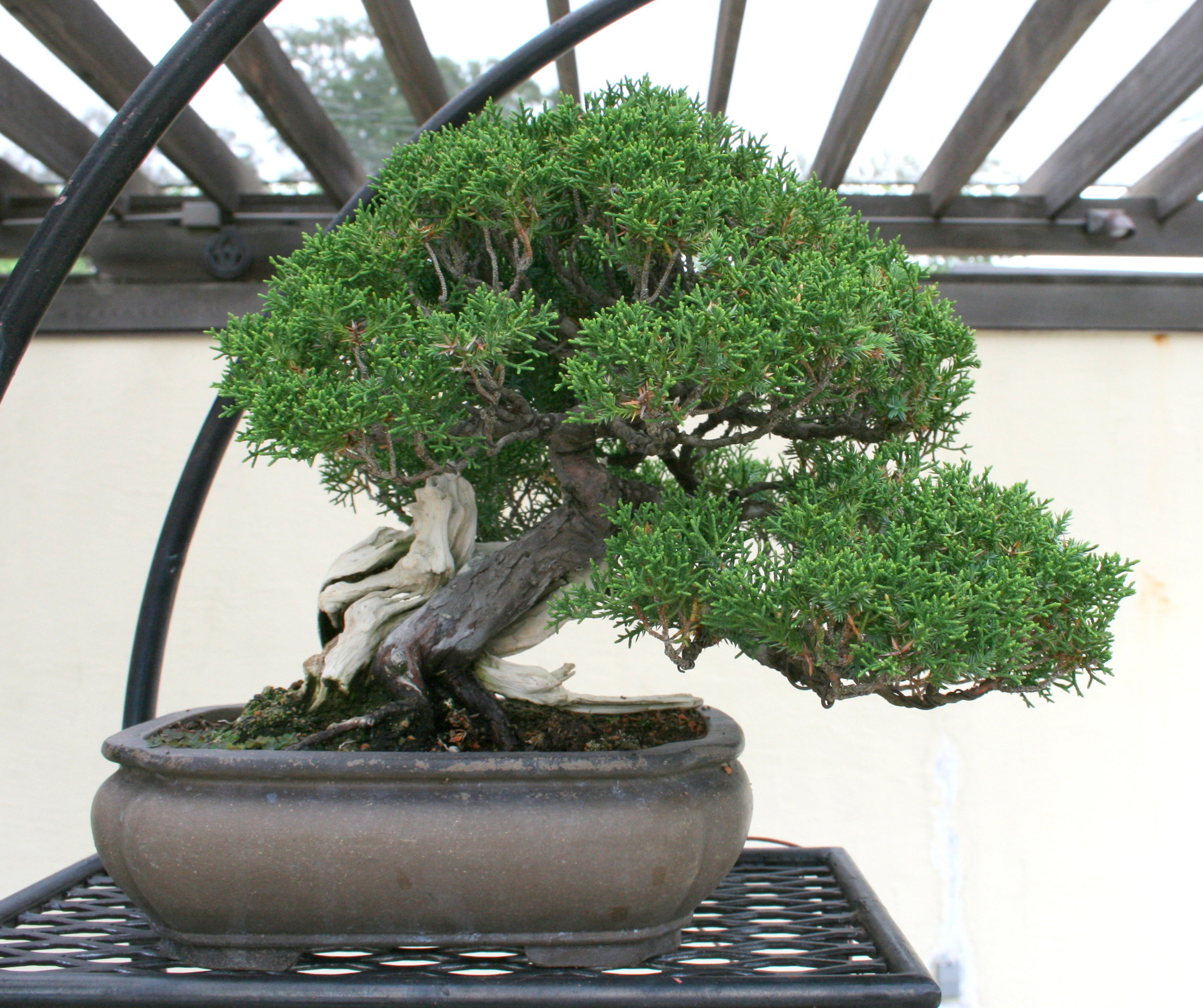
Chinese juniper
Juniperus chinensis
Training age unknown
Gift of All Japan Shohin Bonsai Association, 2010
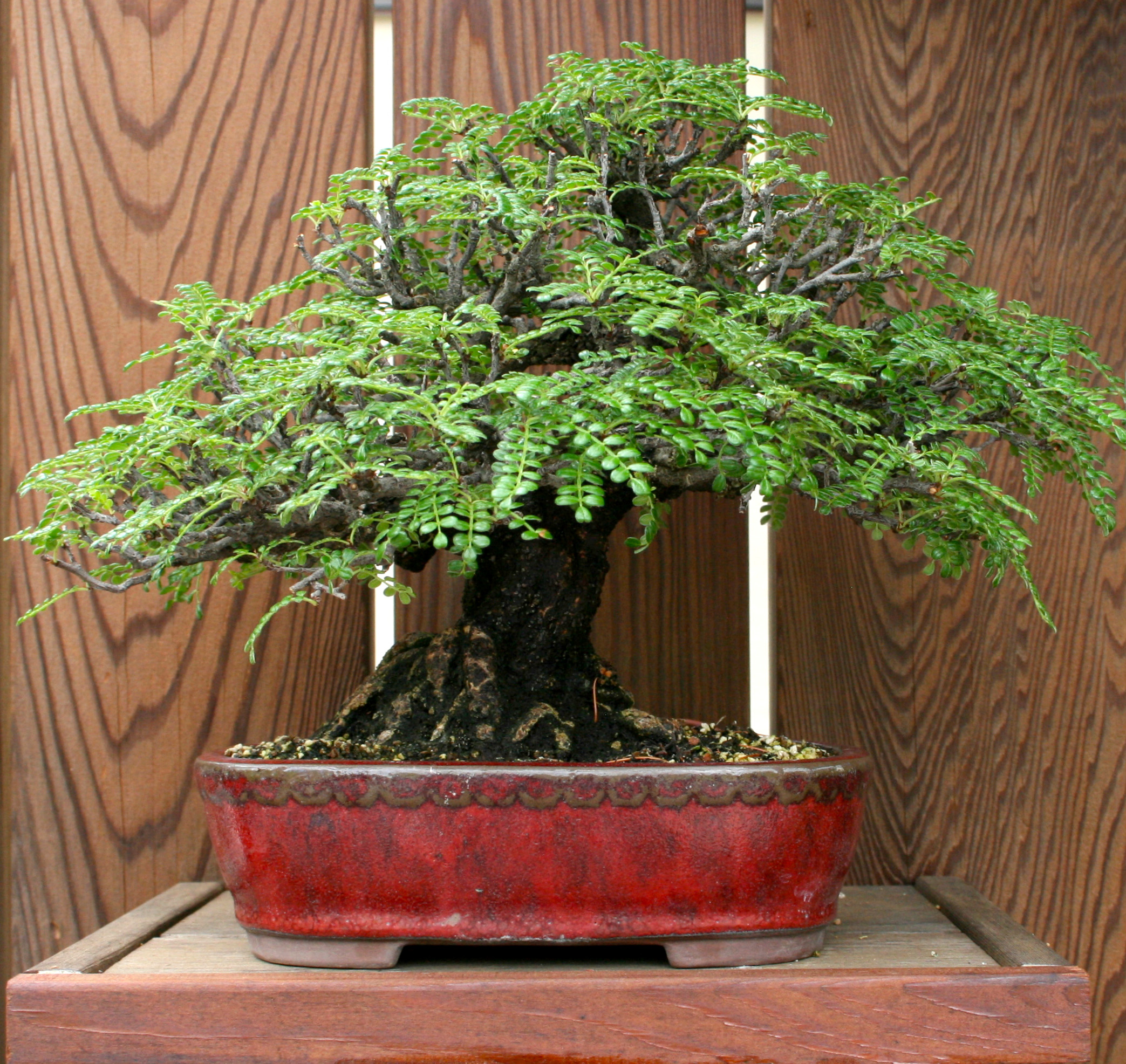
Chinese Emperor-plum
Osteomeles boninensis
Training age unknown
Gift of All Japan Shohin Bonsai Association, 2010
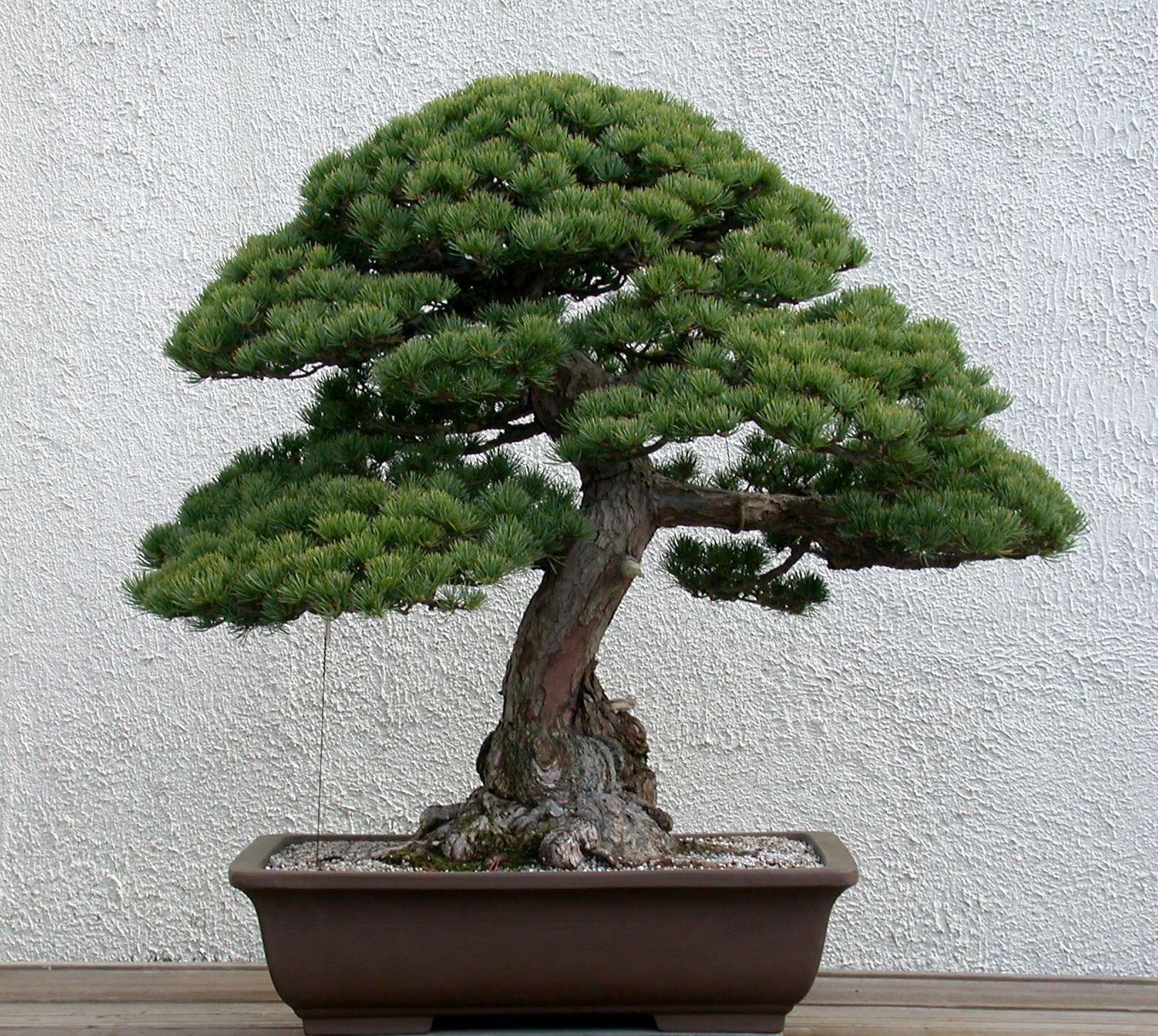
Japanese white pine
Pinus parviflora
In training since 1832
Gift of Hassan II, King of Morocco, 1983
This tree was a gift from the King of Morocco, His Majesty Hassan II, to President Ronald Reagan in 1983.
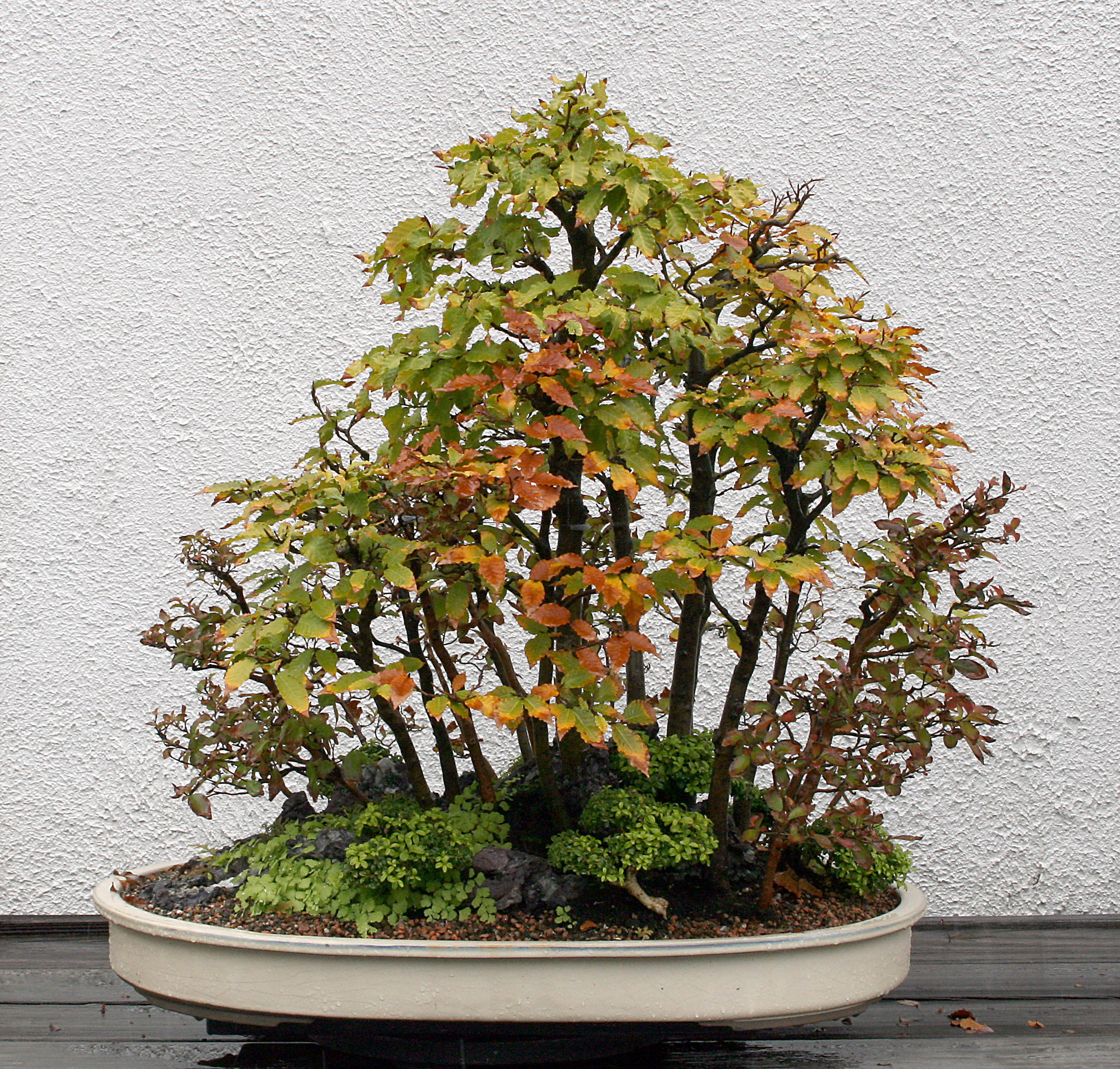
Stewartia, beech, boxwood
Stewartia monadelpha, Fagus crenata, Buxus microphylla
In training since 2001
Gift of Toshio Kawamoto, 2001
Notice that 3 different types of trees grow together in this type of bonsai called saikei. It is a "living landscape" designed by Japanese artist Kawamoto, who introduced this style after the WWII.
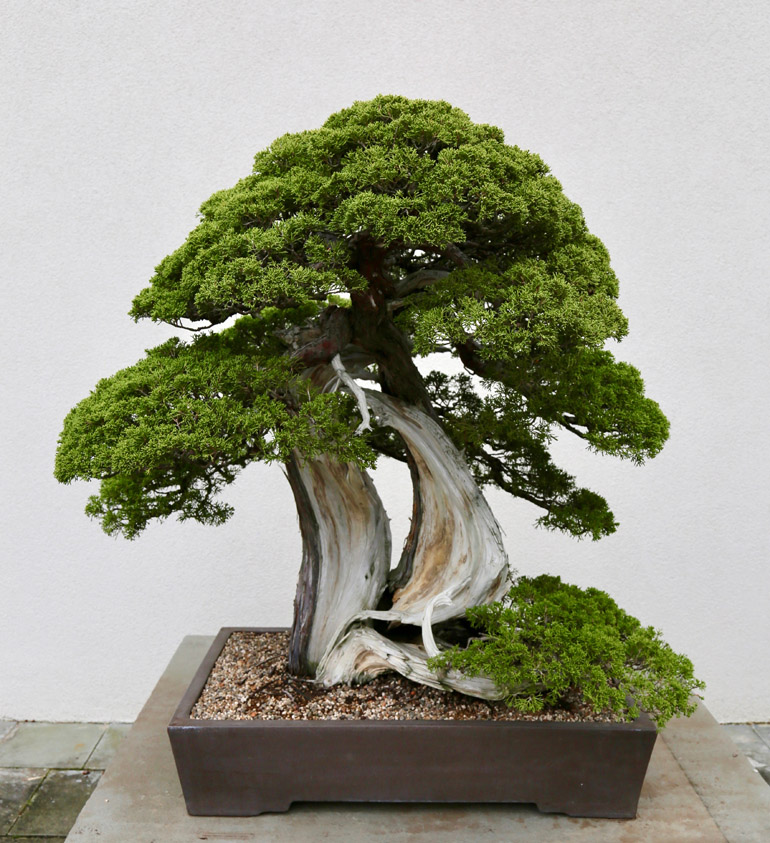
Sargent juniper
Juniperus chinensis var. sargentii
Training age unknown
Gift of Doug Paul, 2015










































